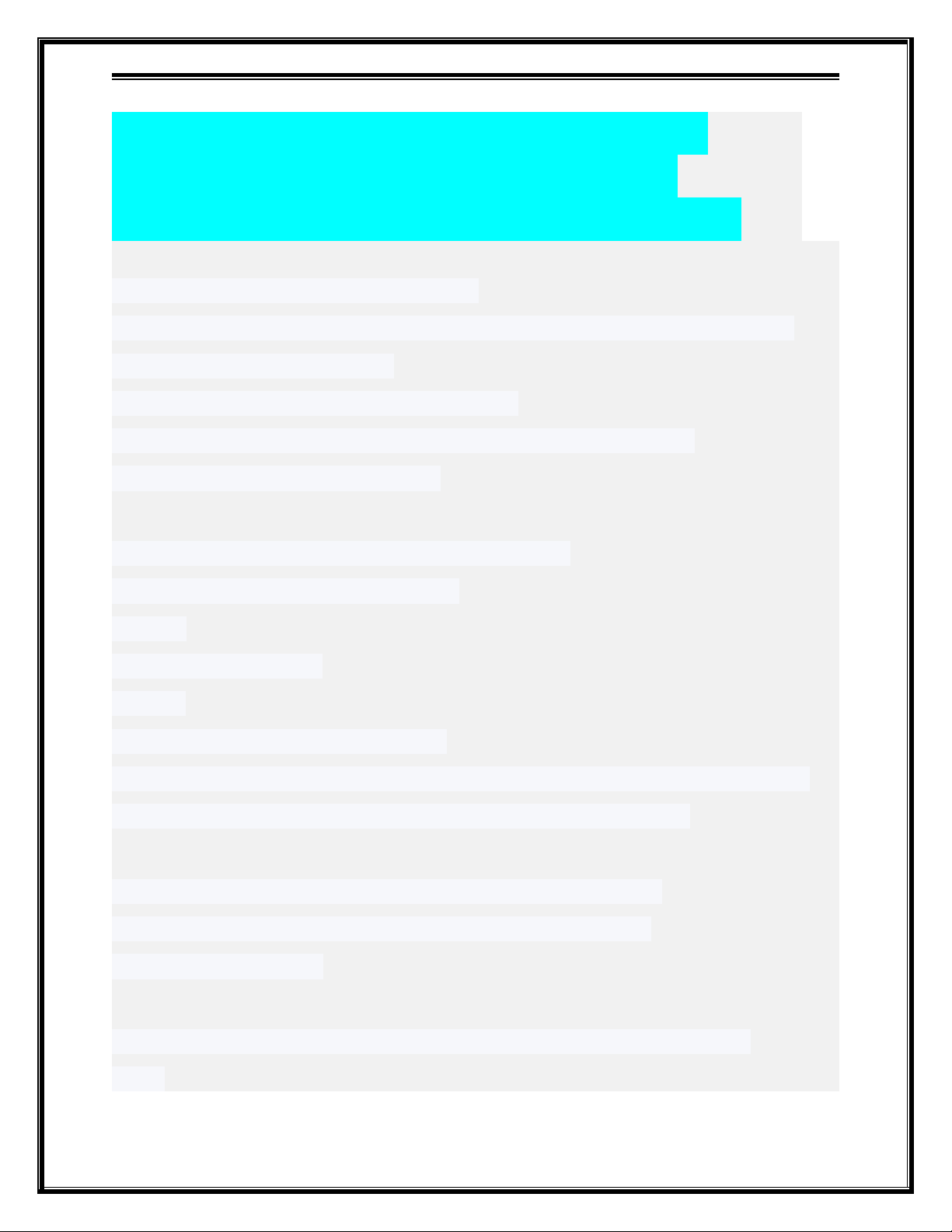
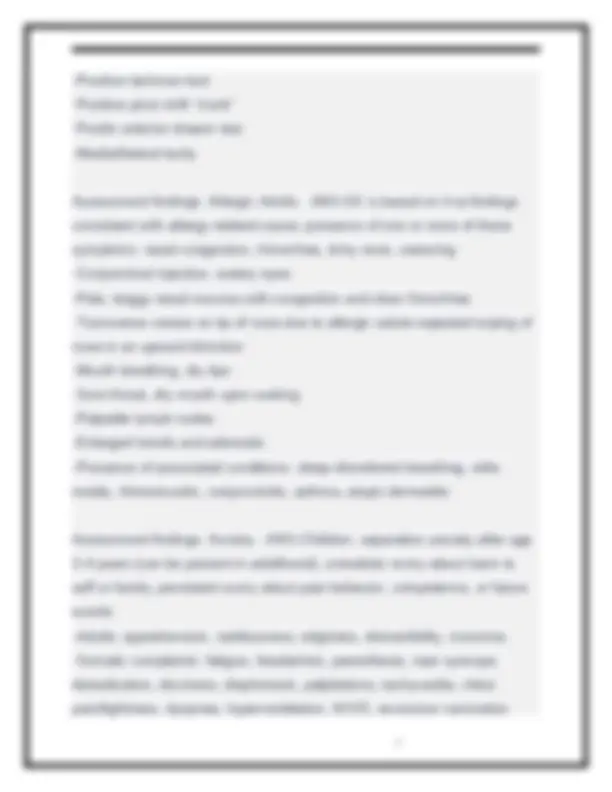
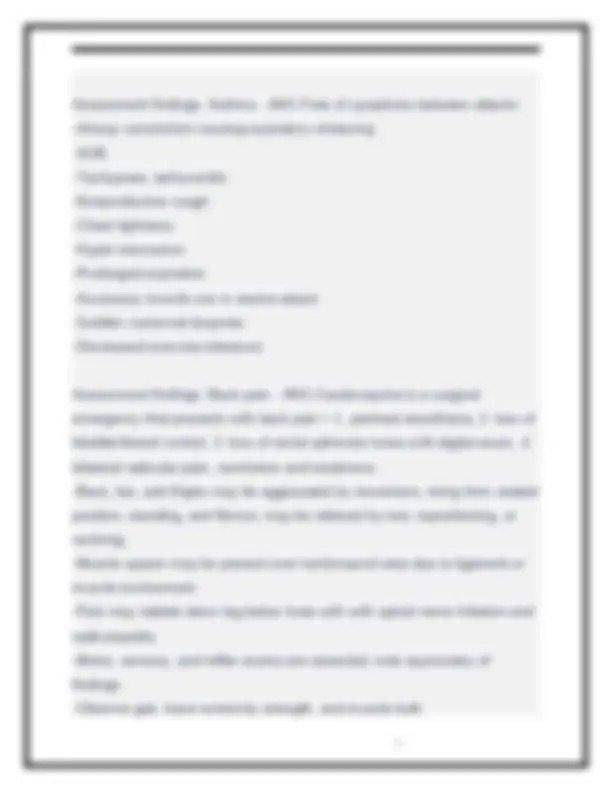
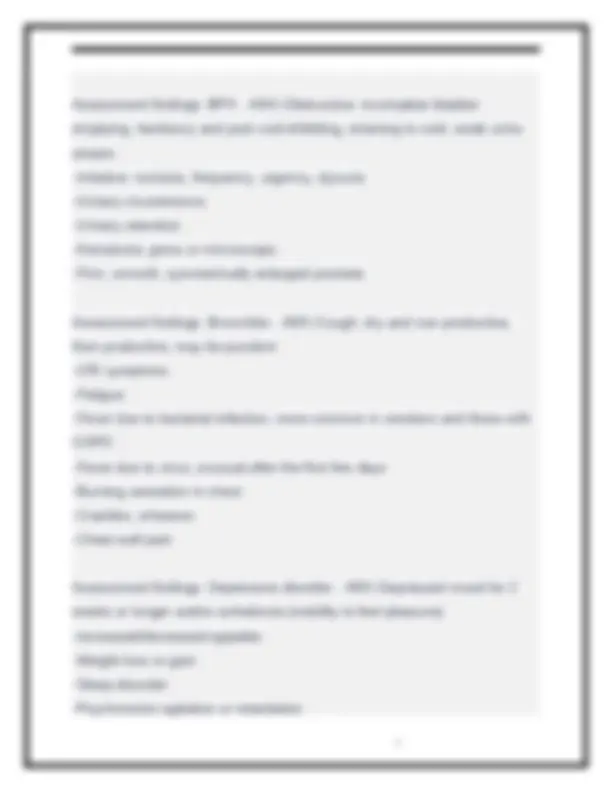
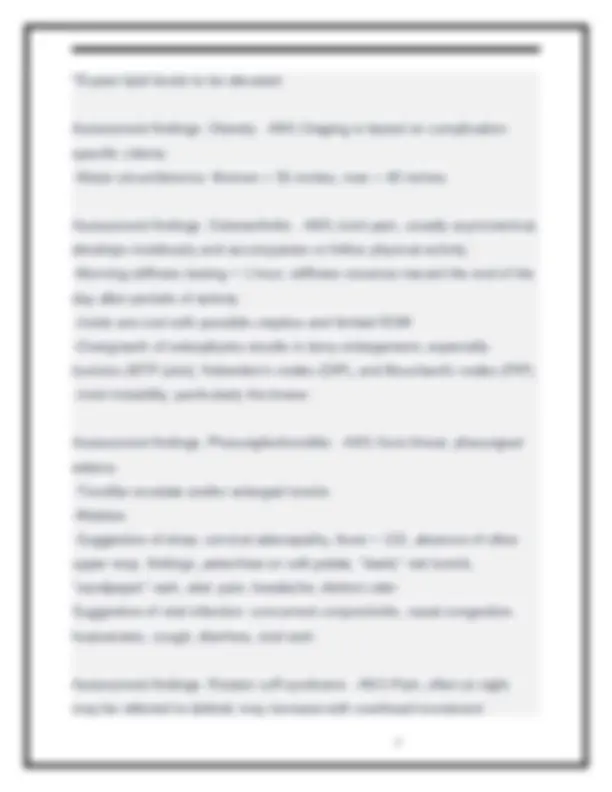
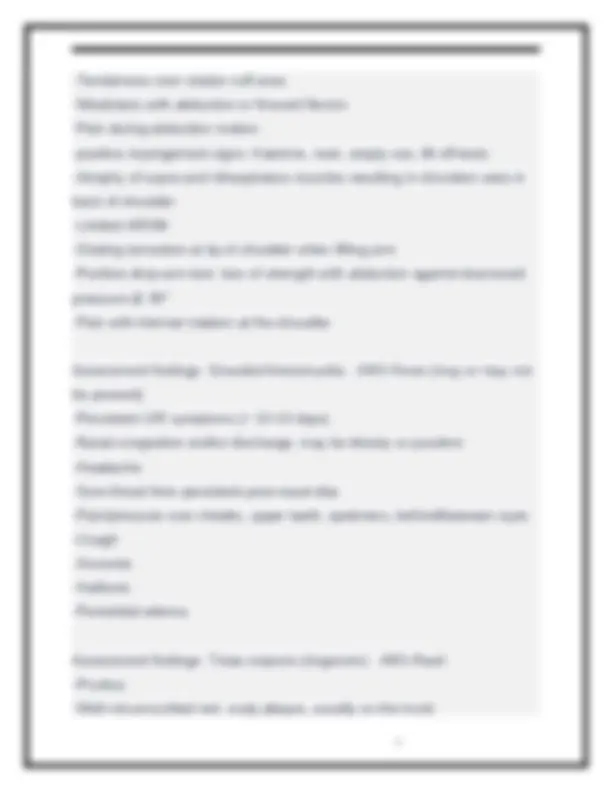
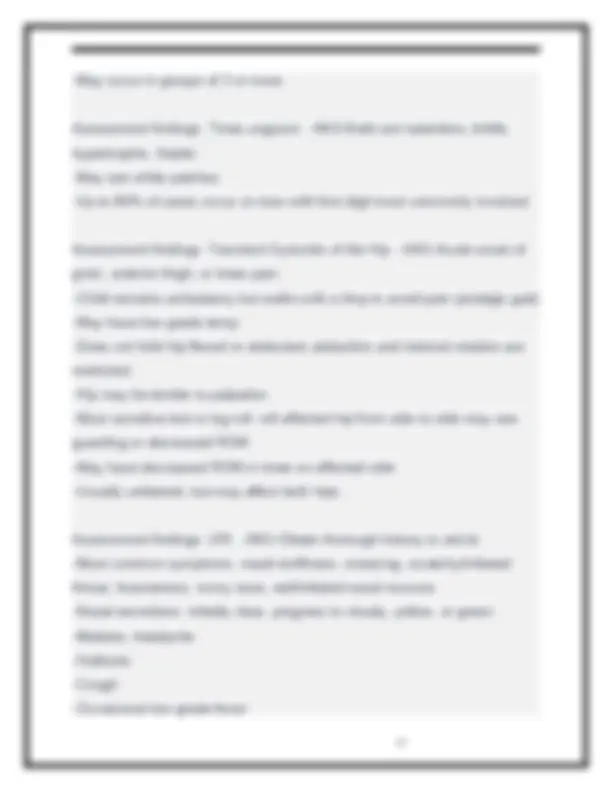
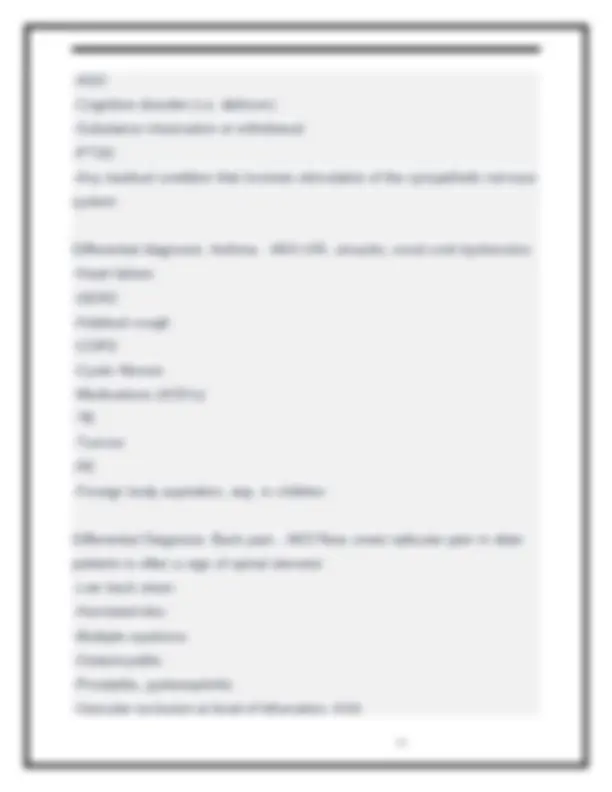
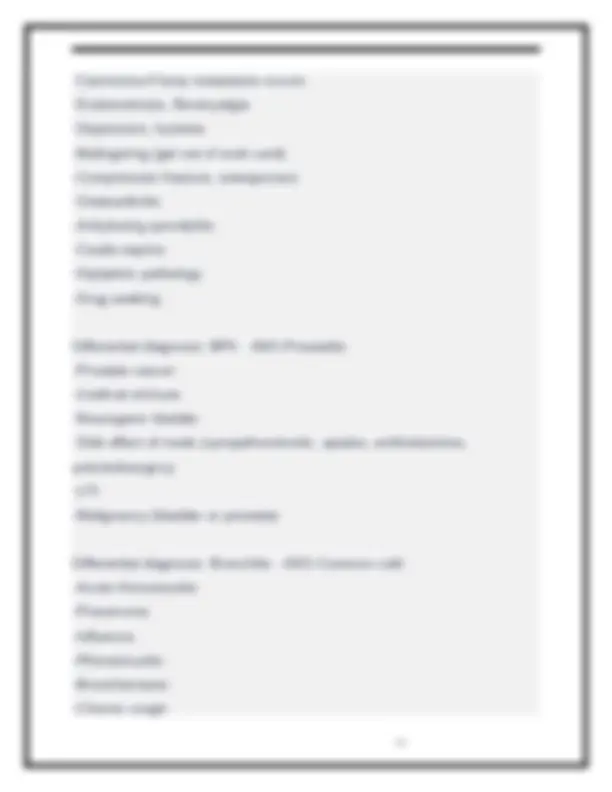
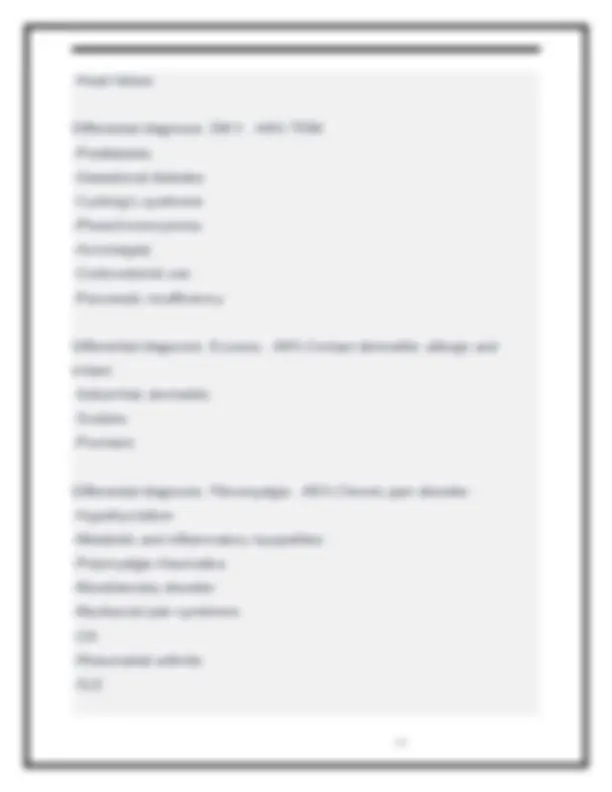
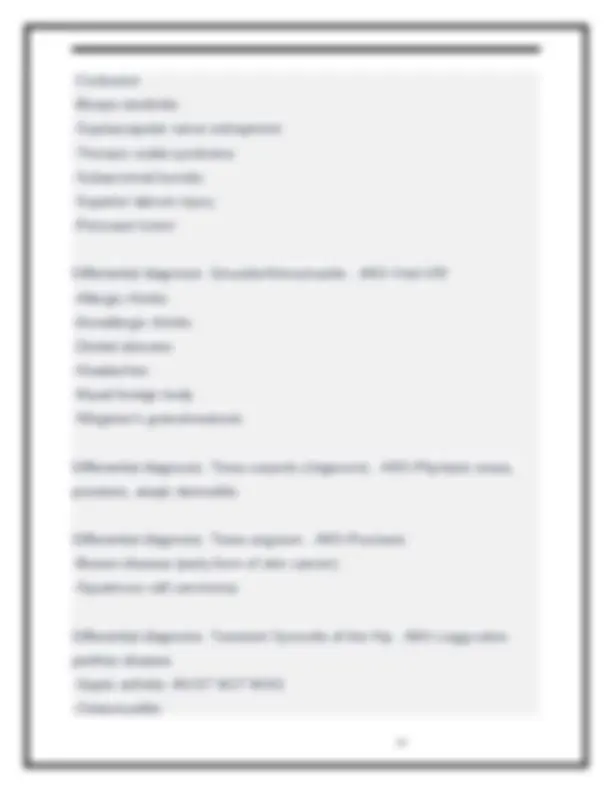
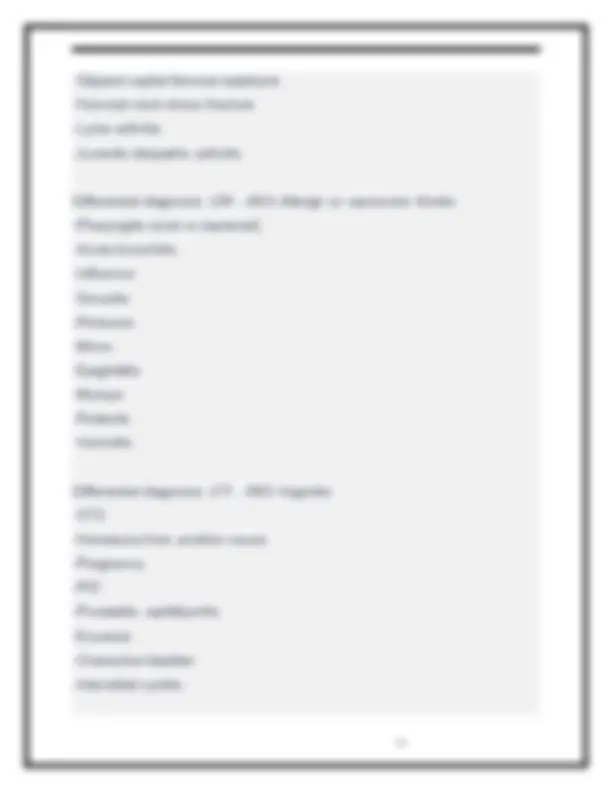
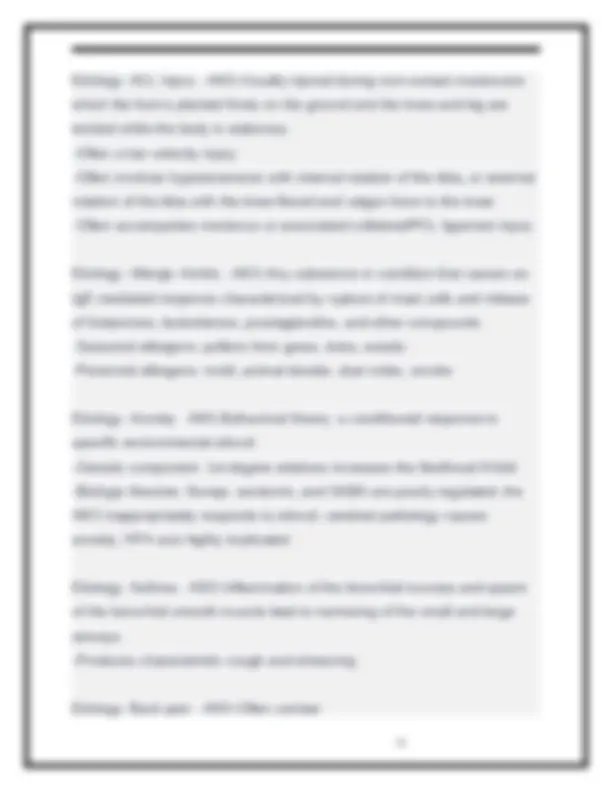
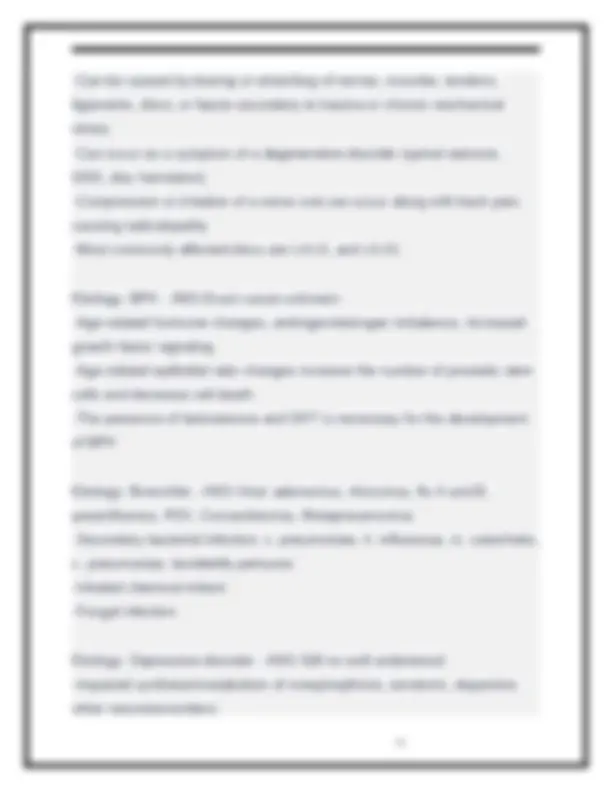
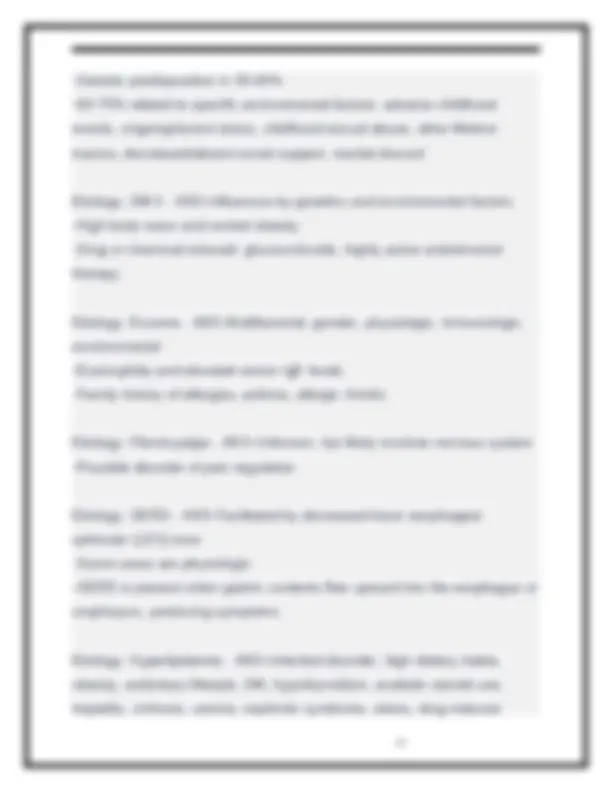
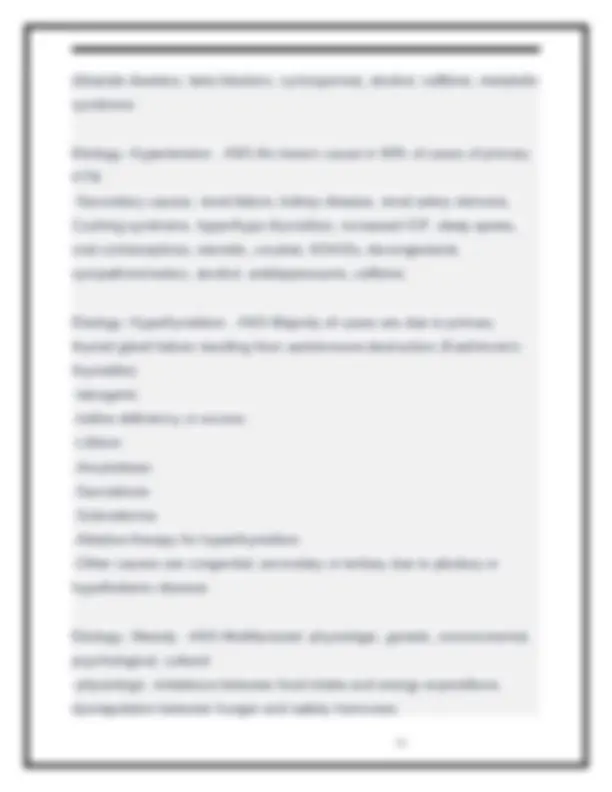
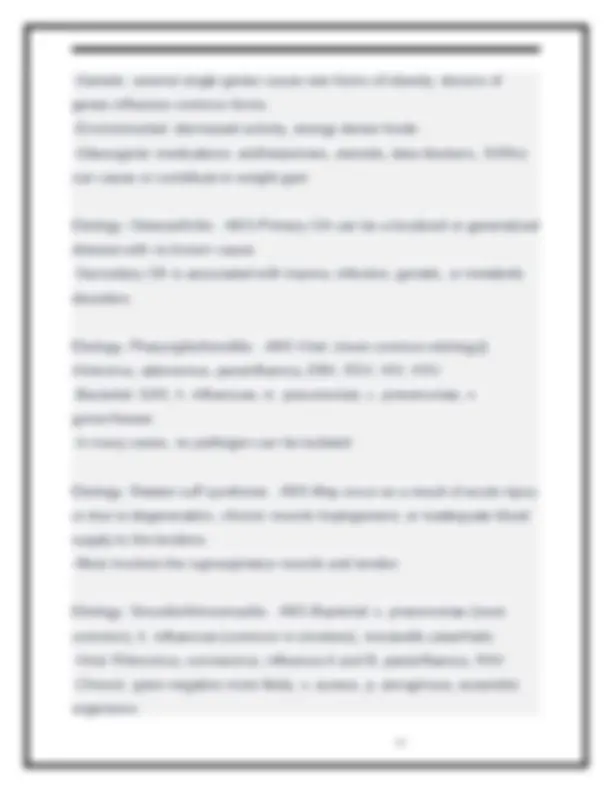
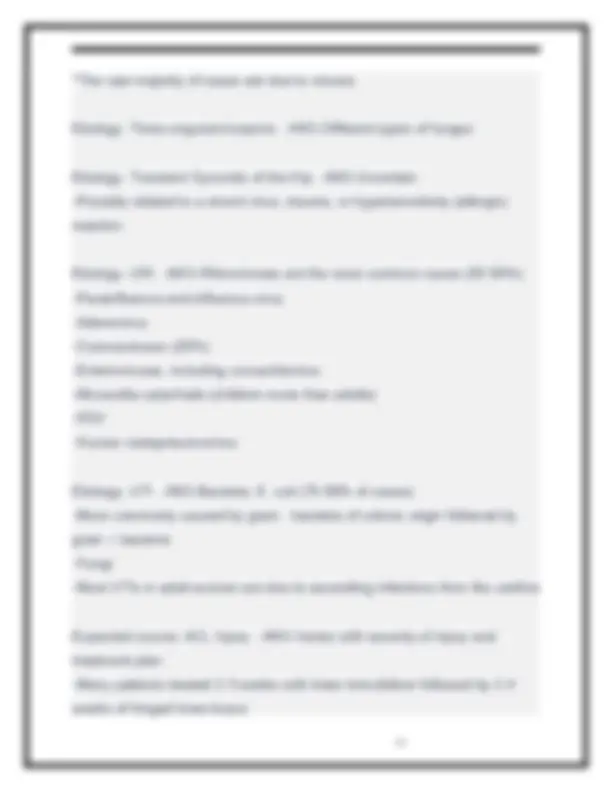
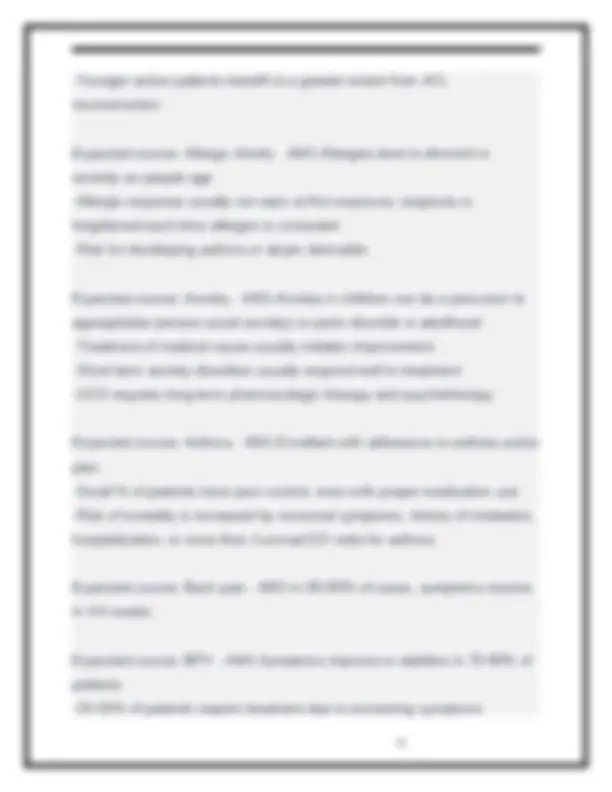
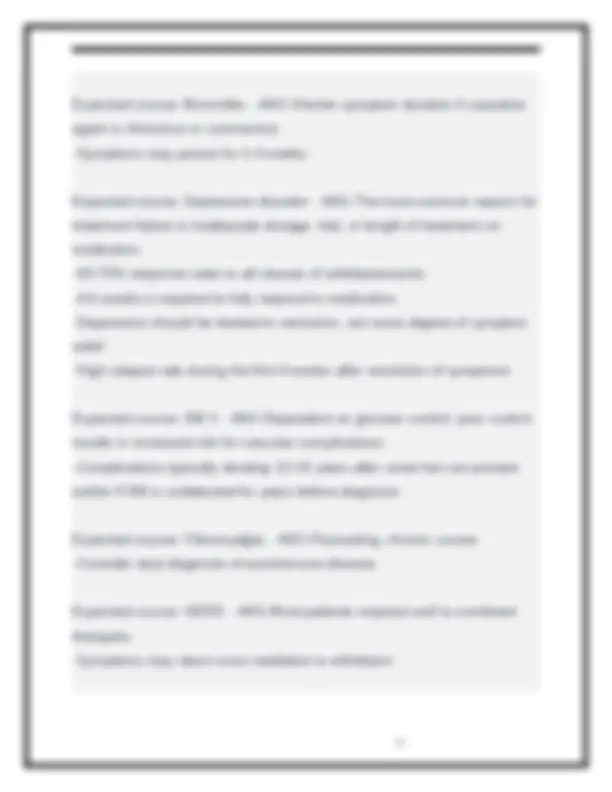
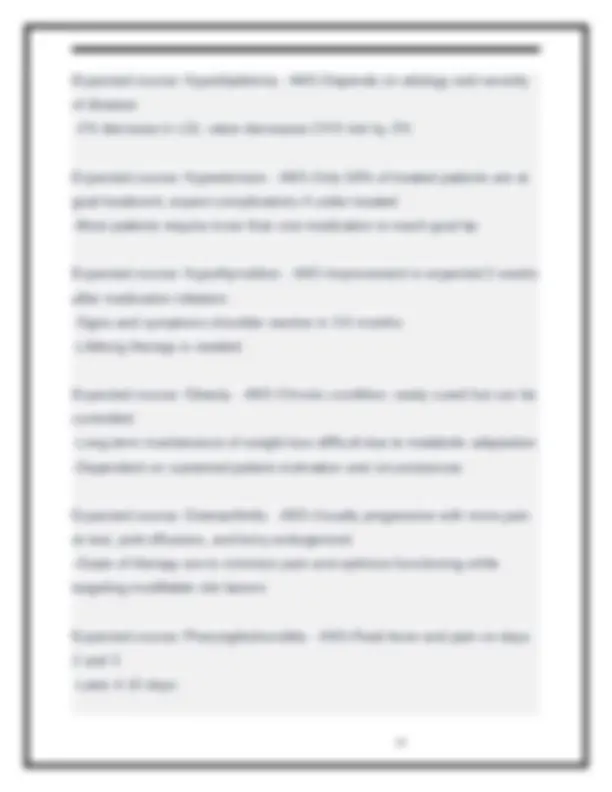
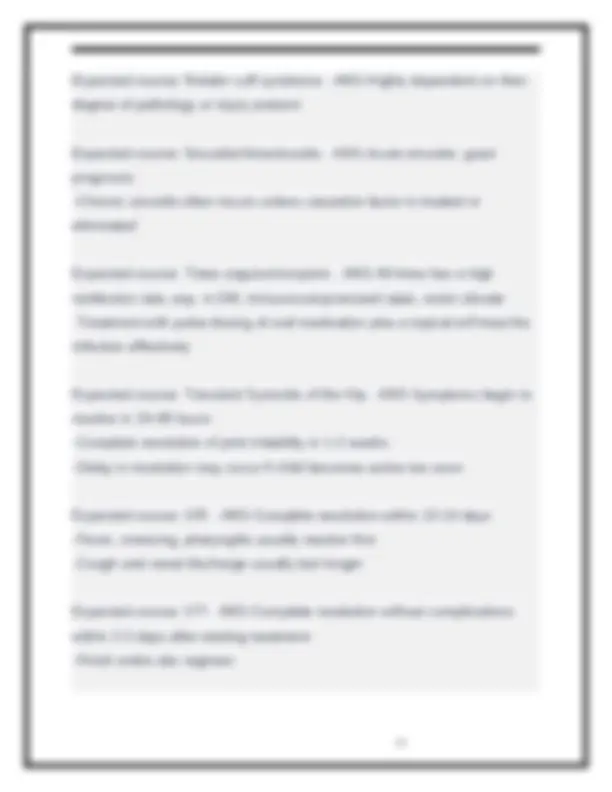
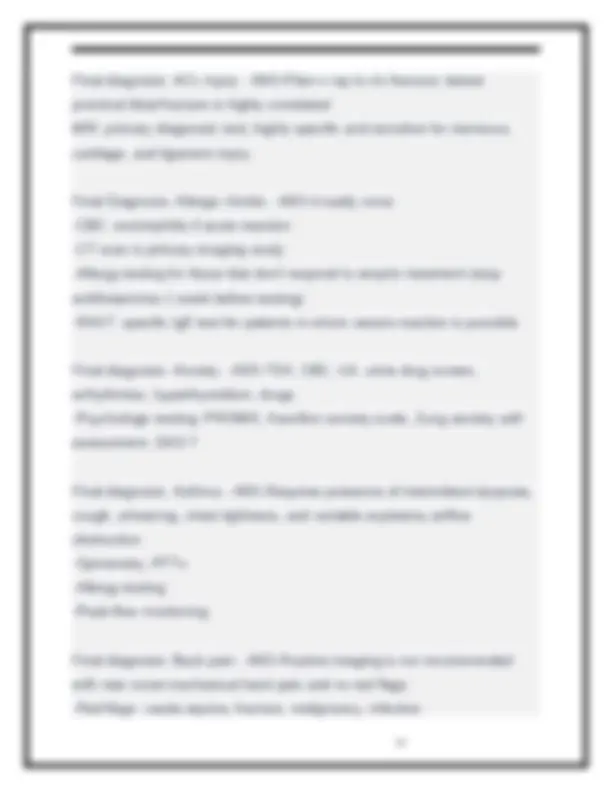
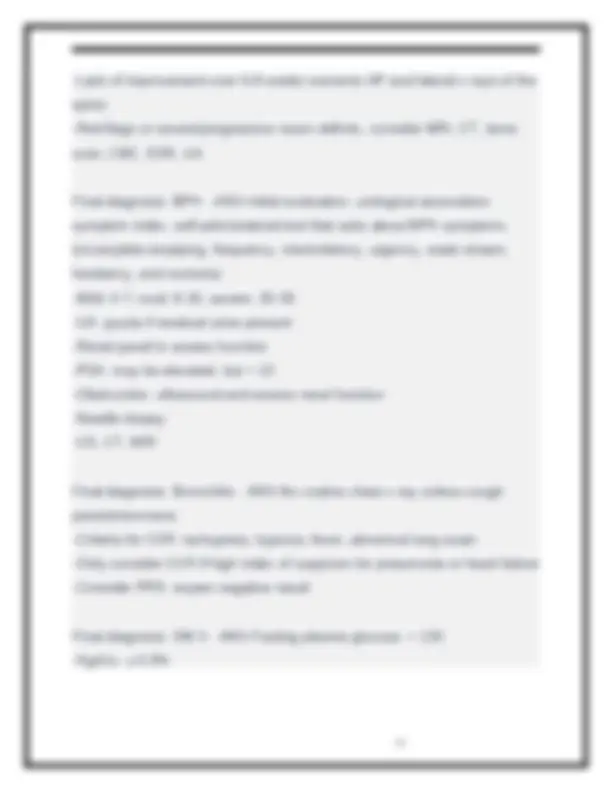
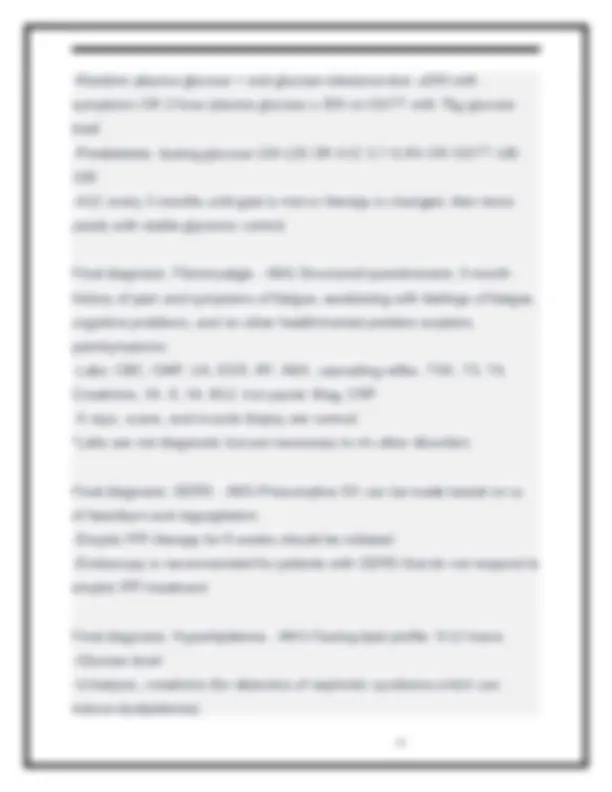
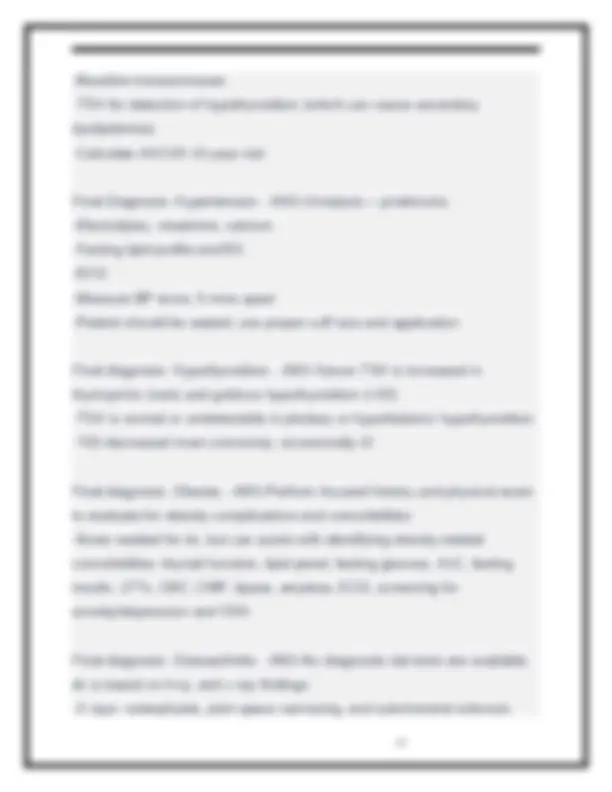
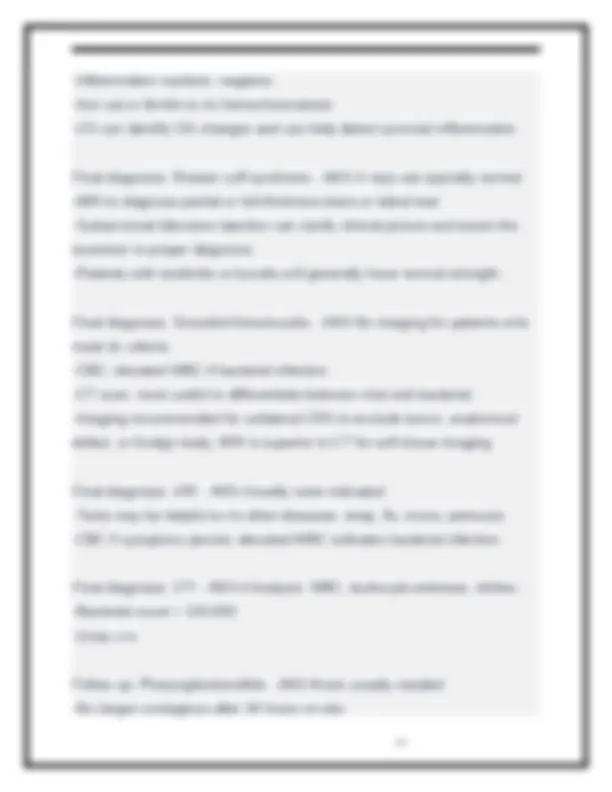
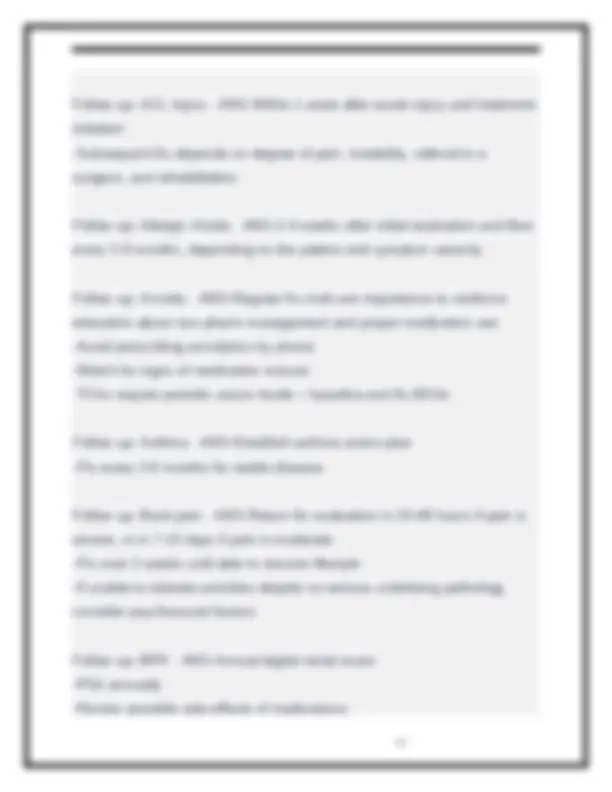
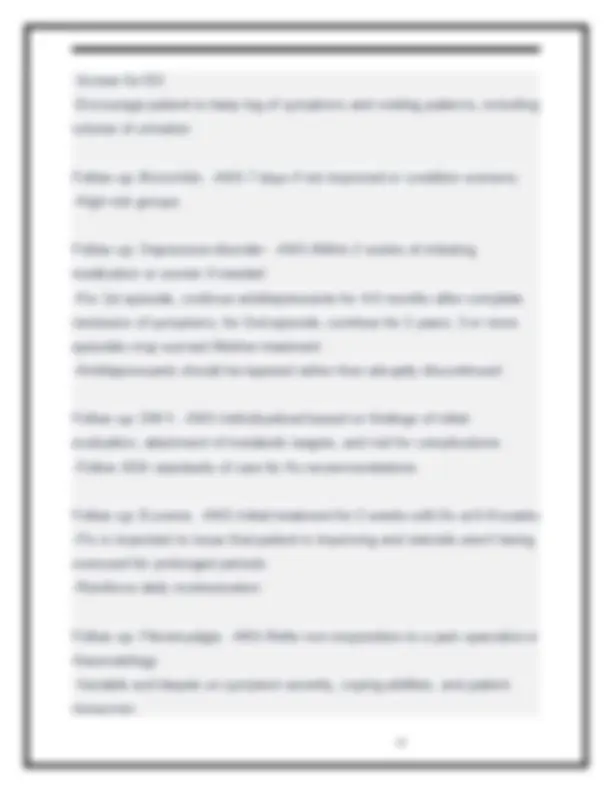
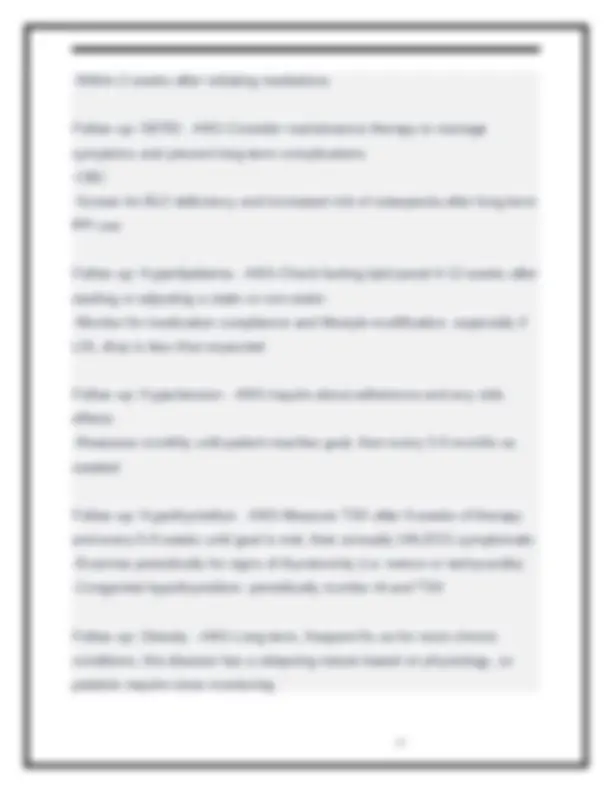
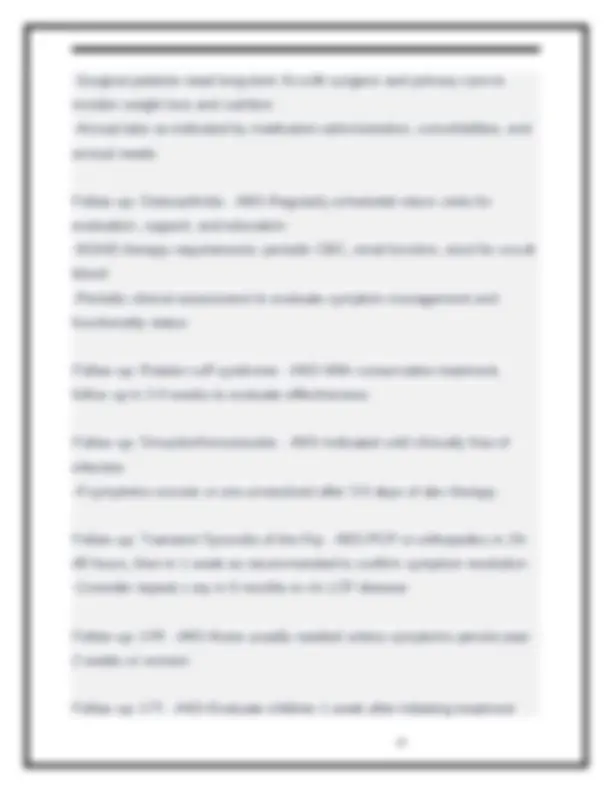
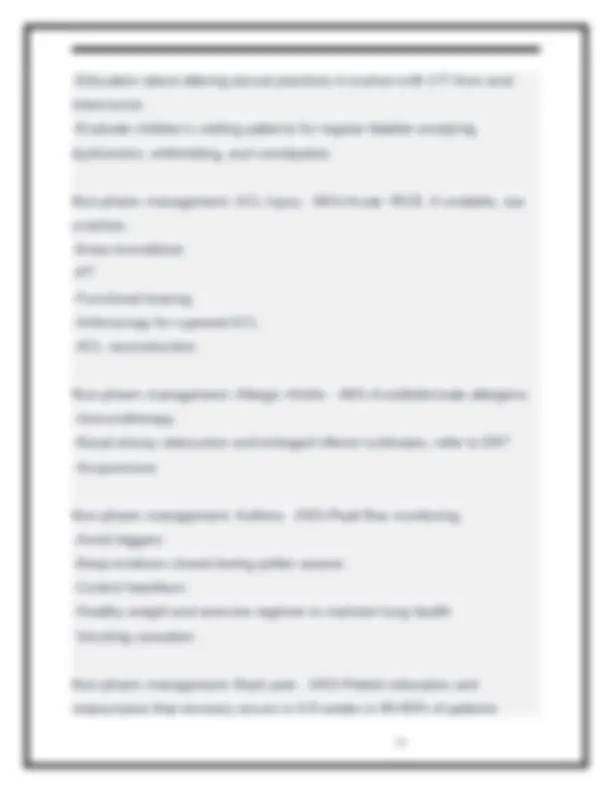
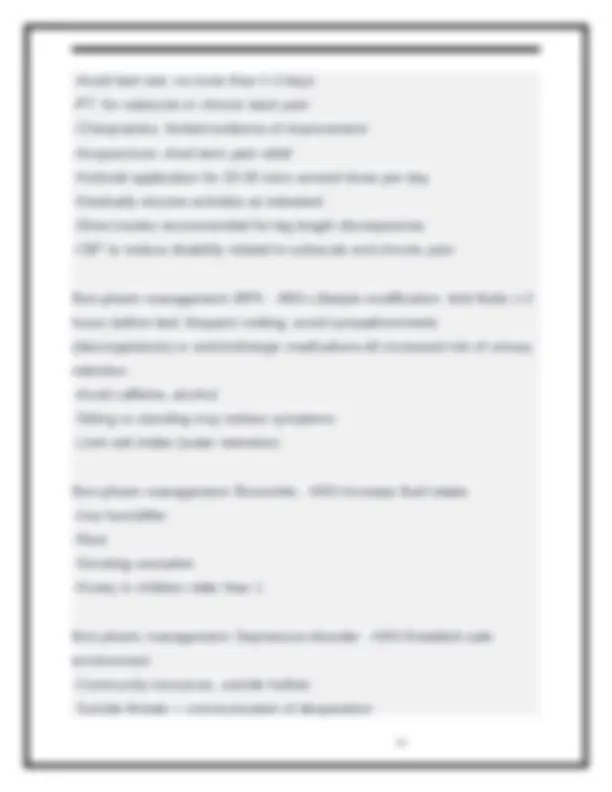
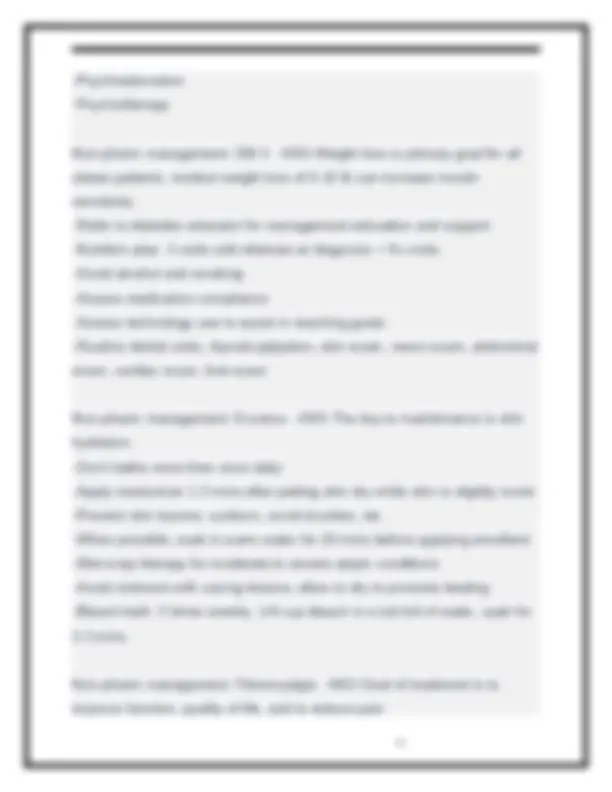
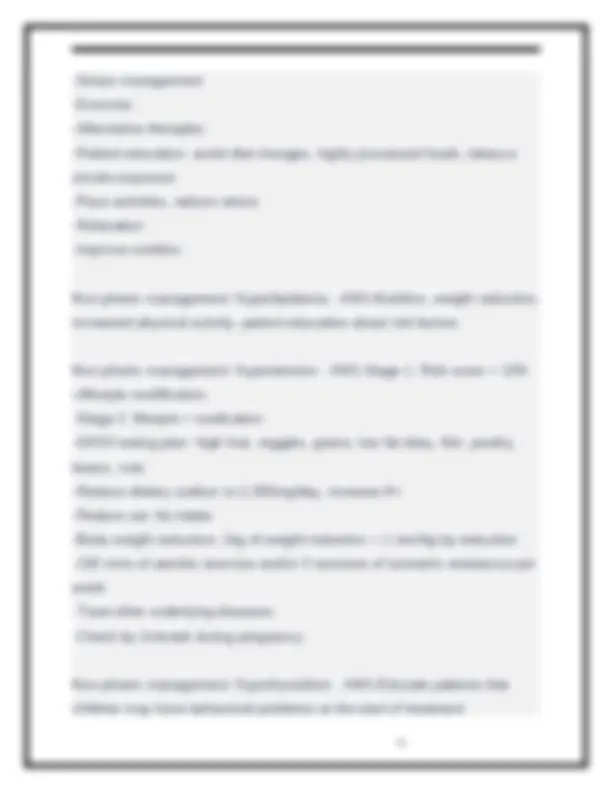
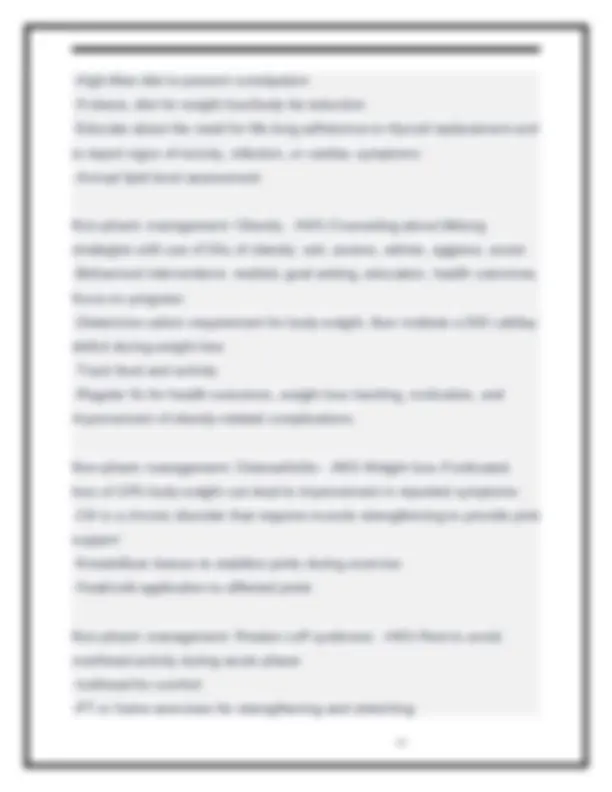
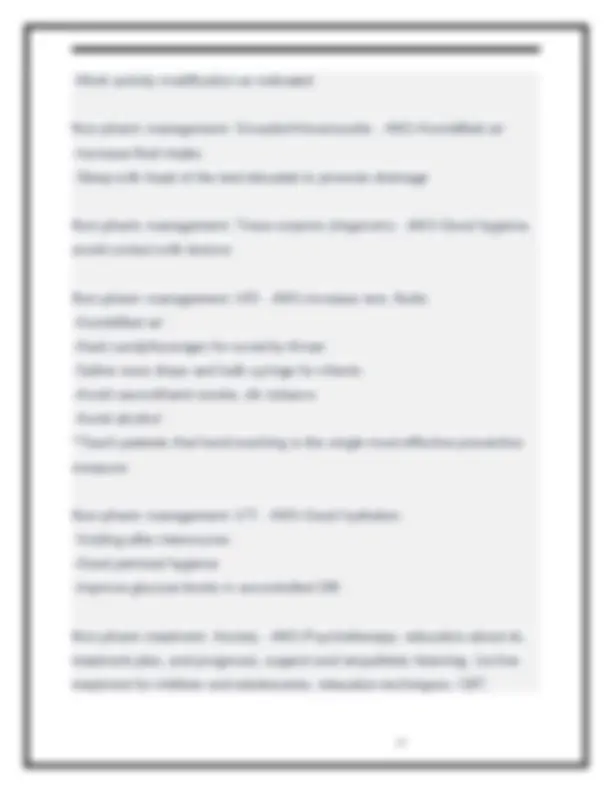
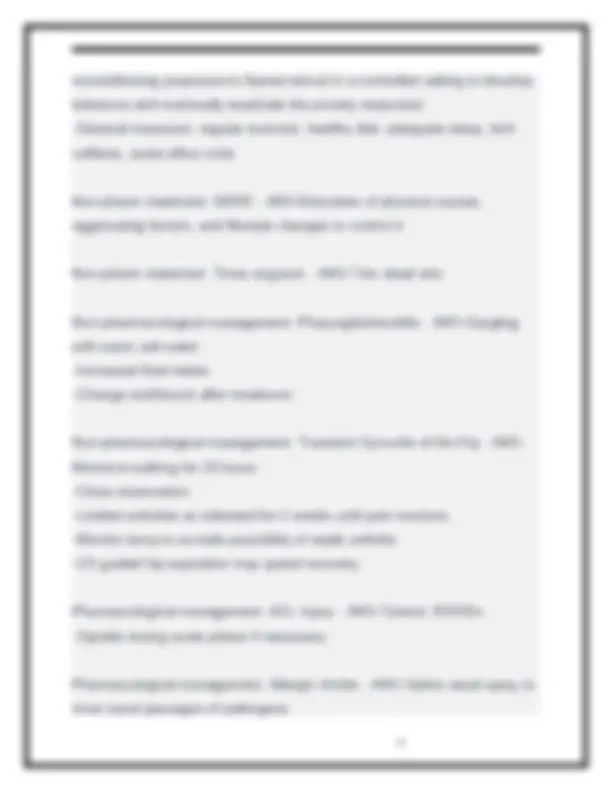
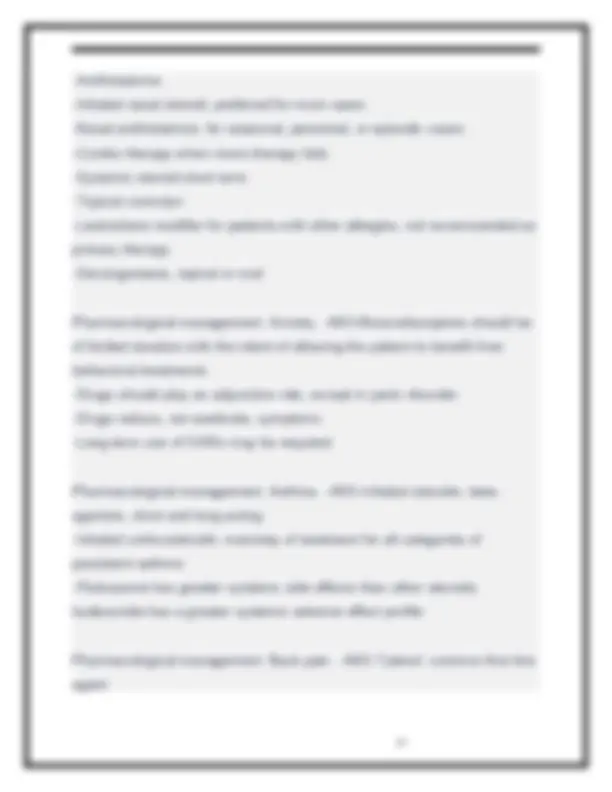
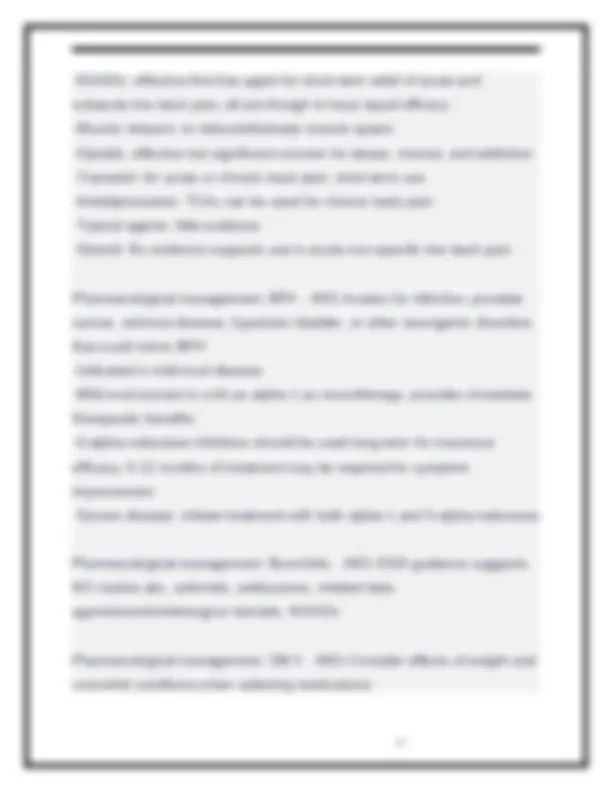
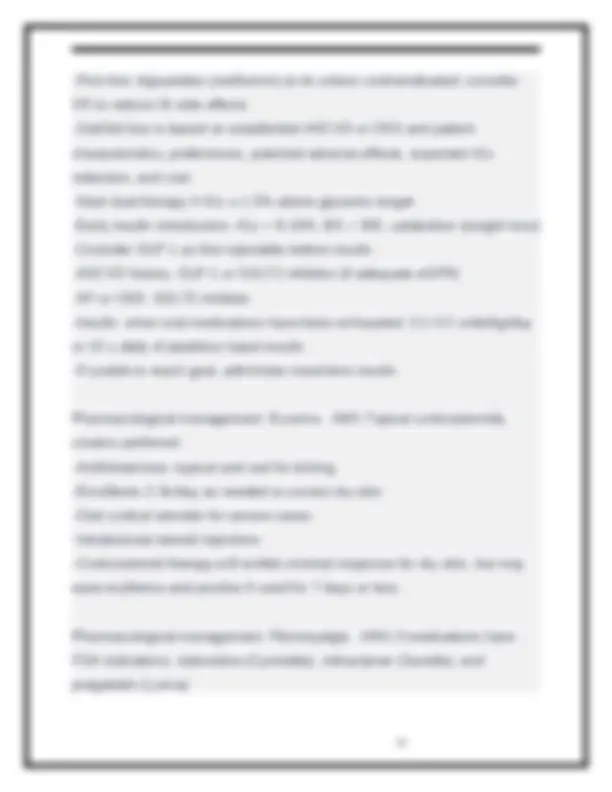
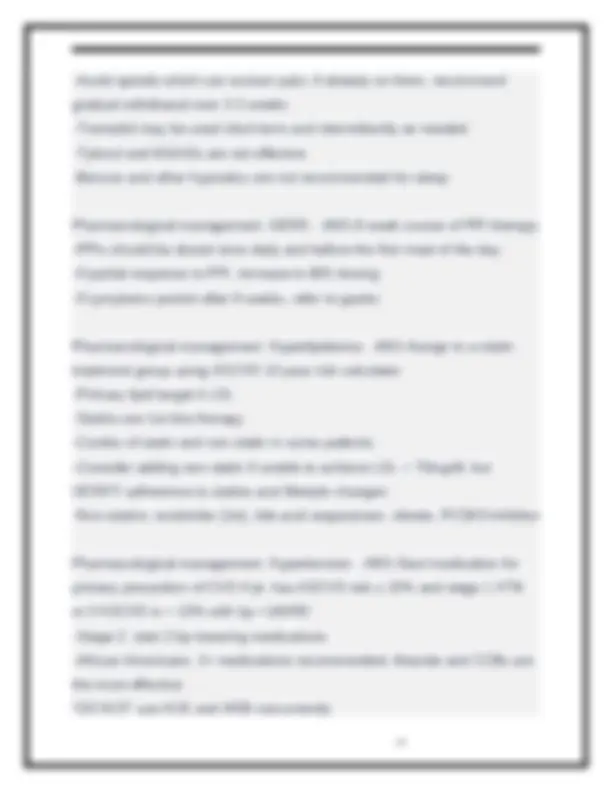
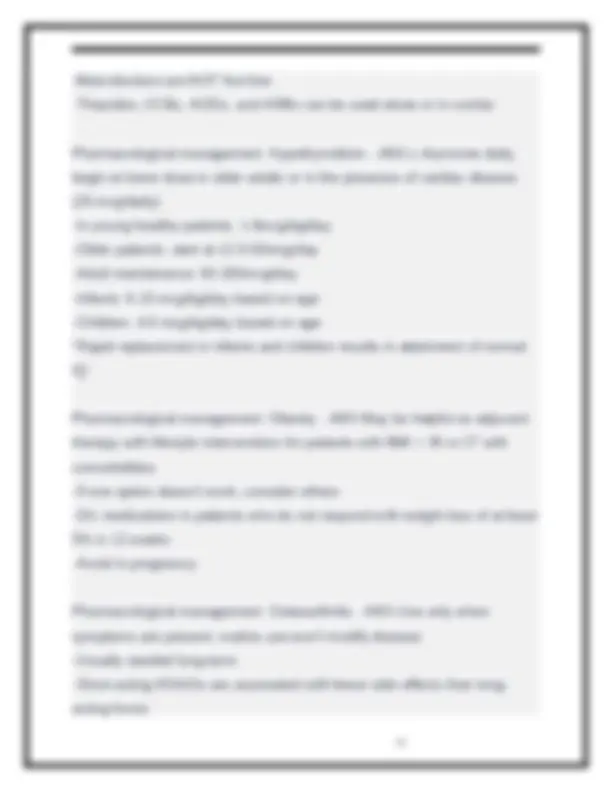
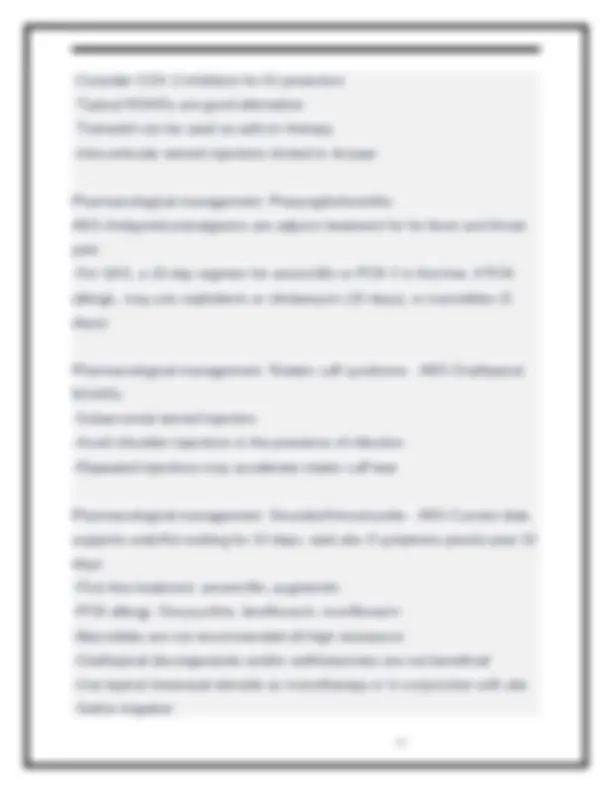
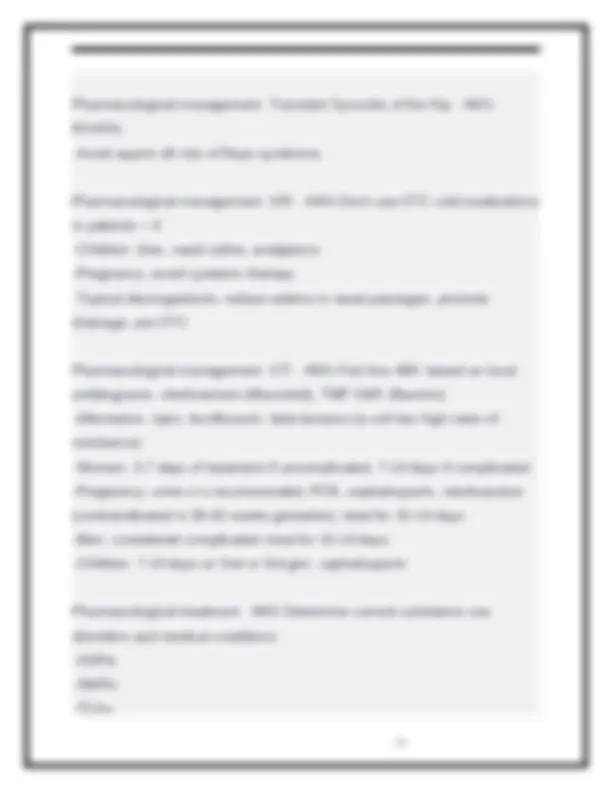
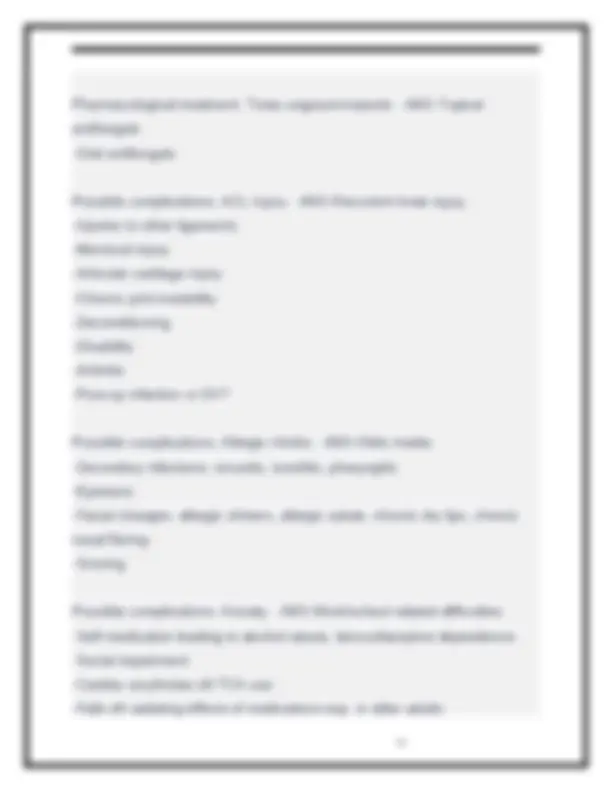
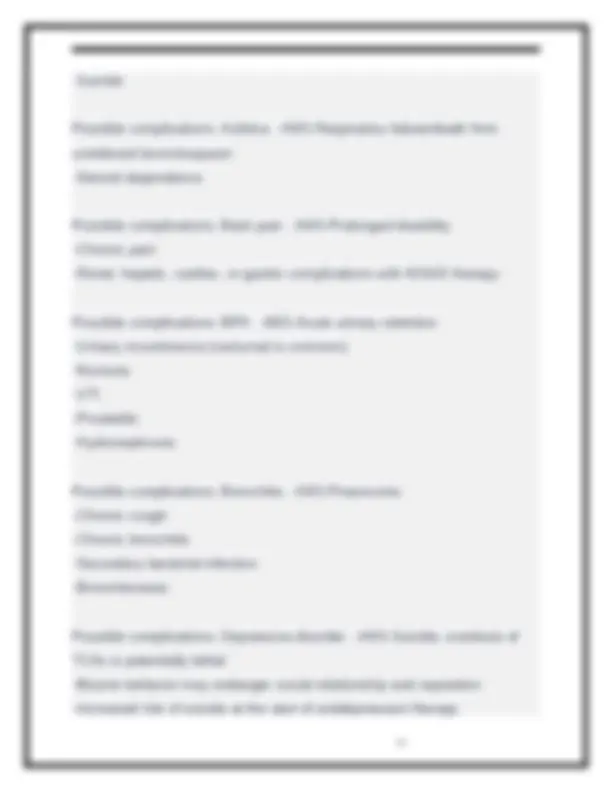
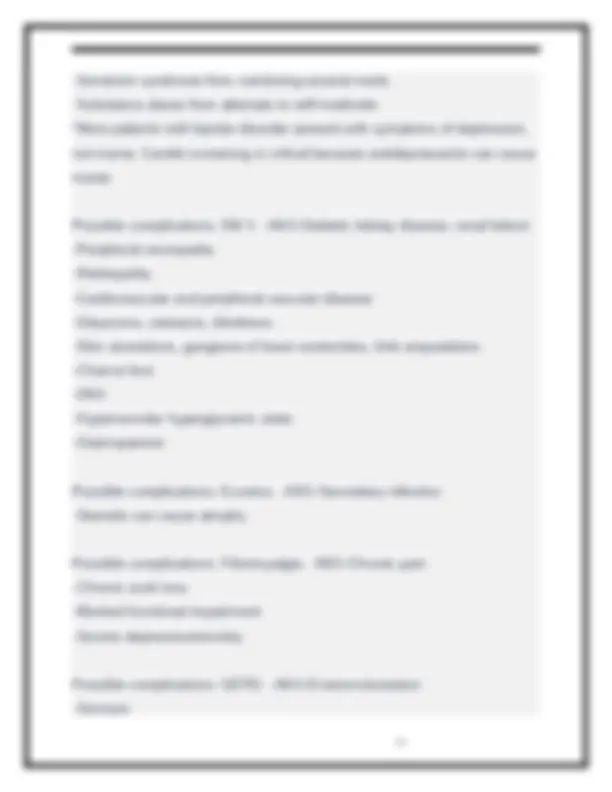
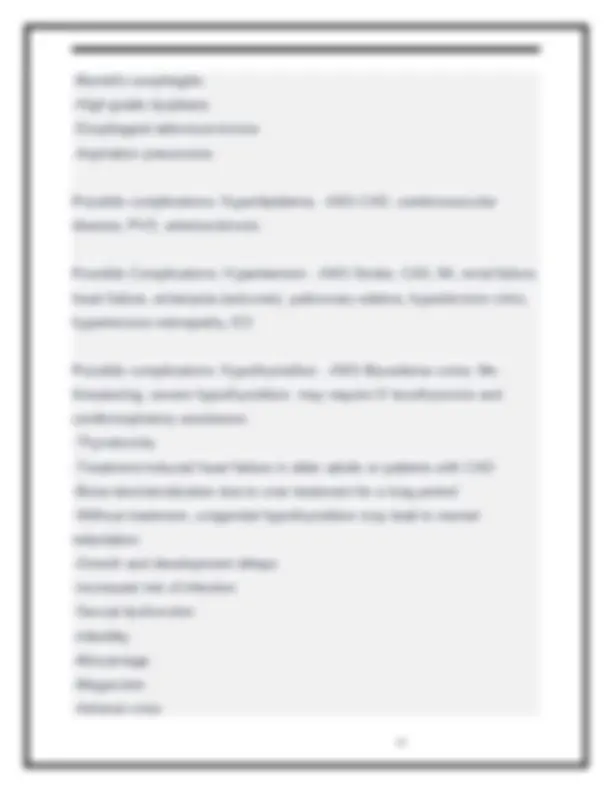
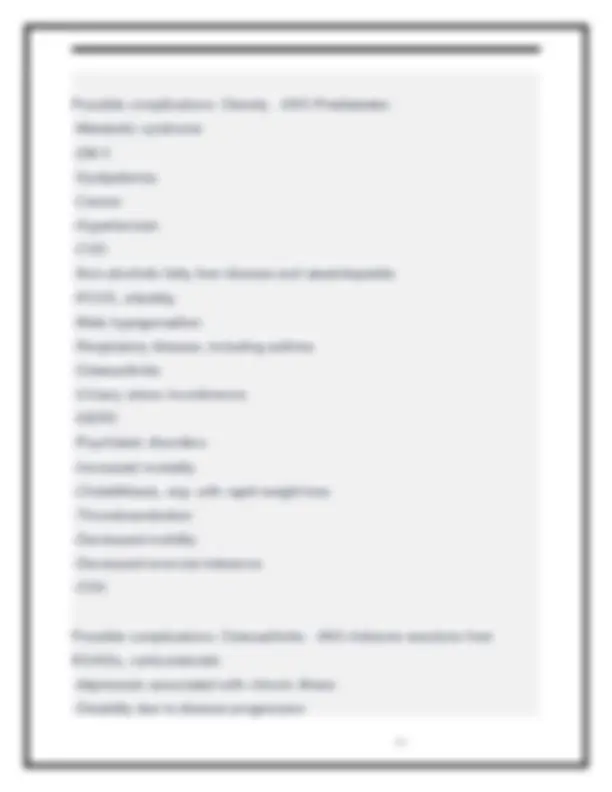
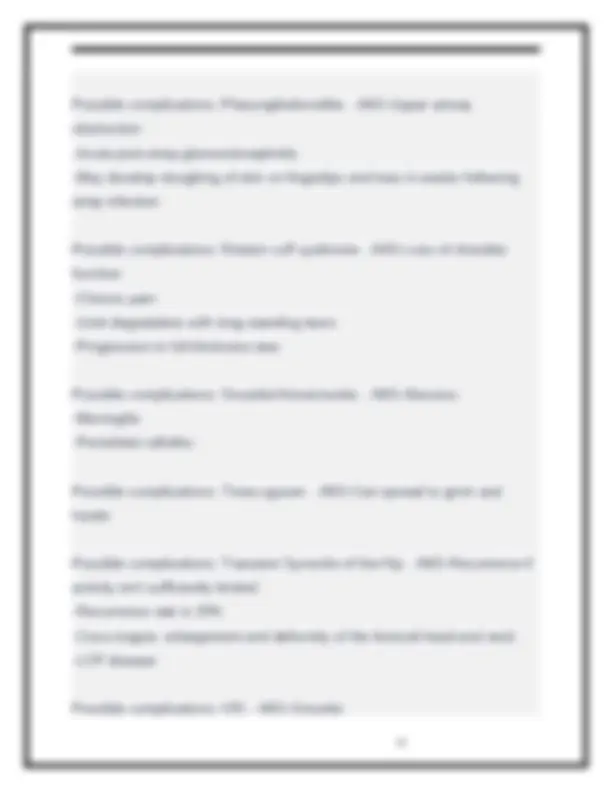
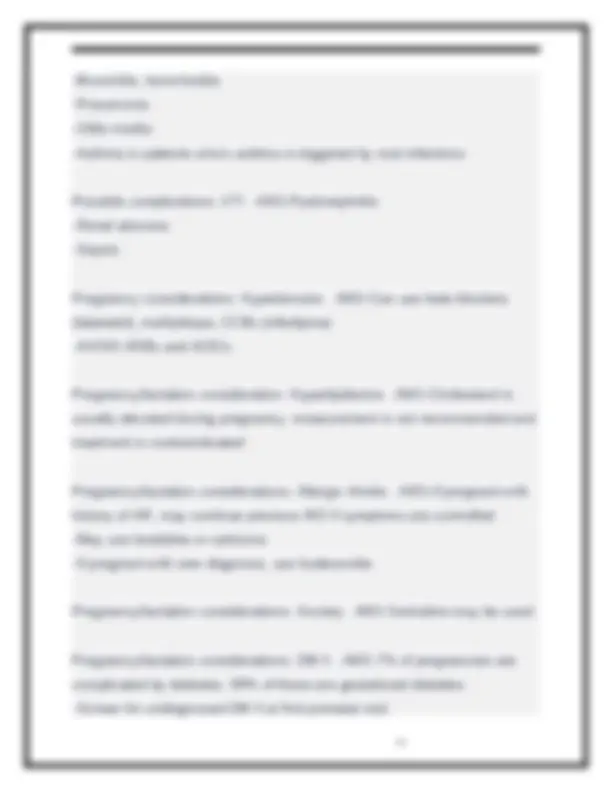
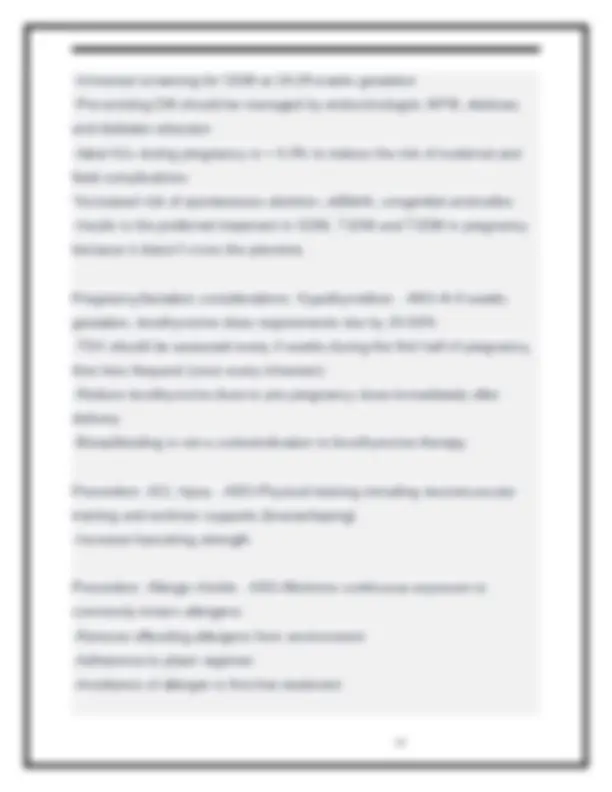
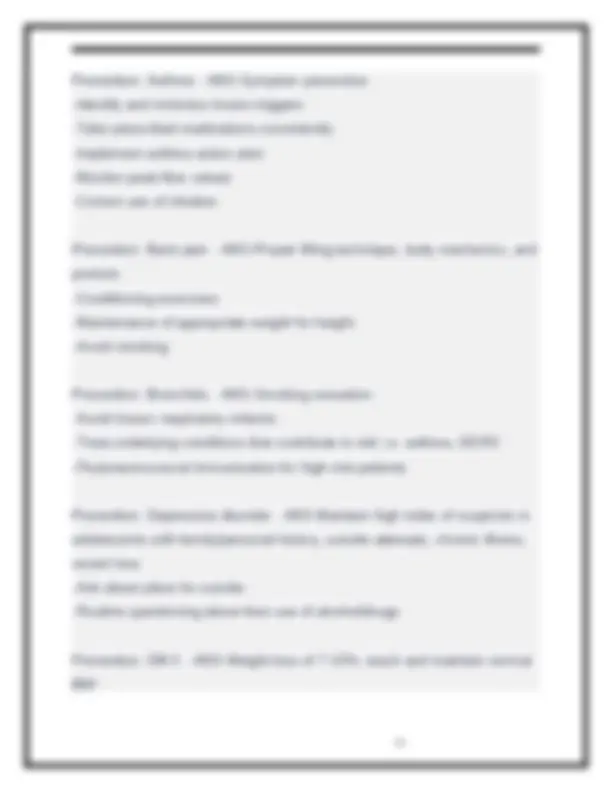
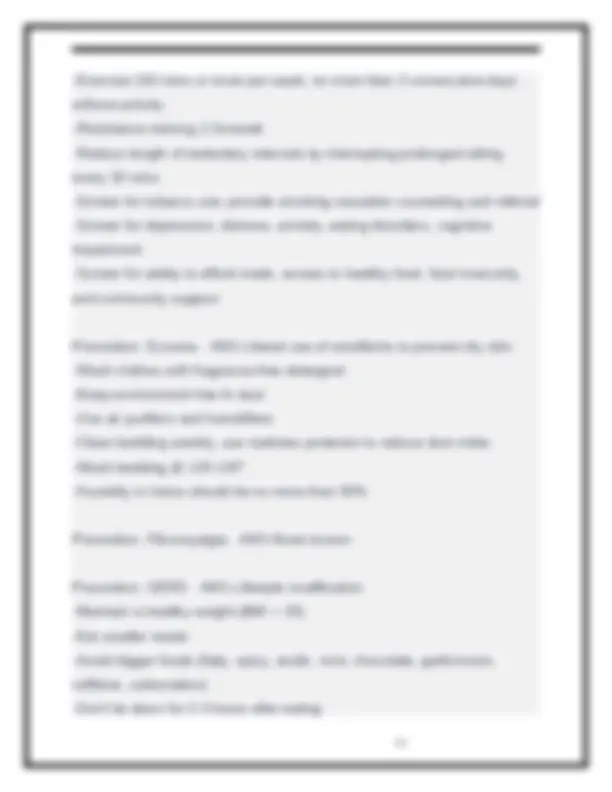
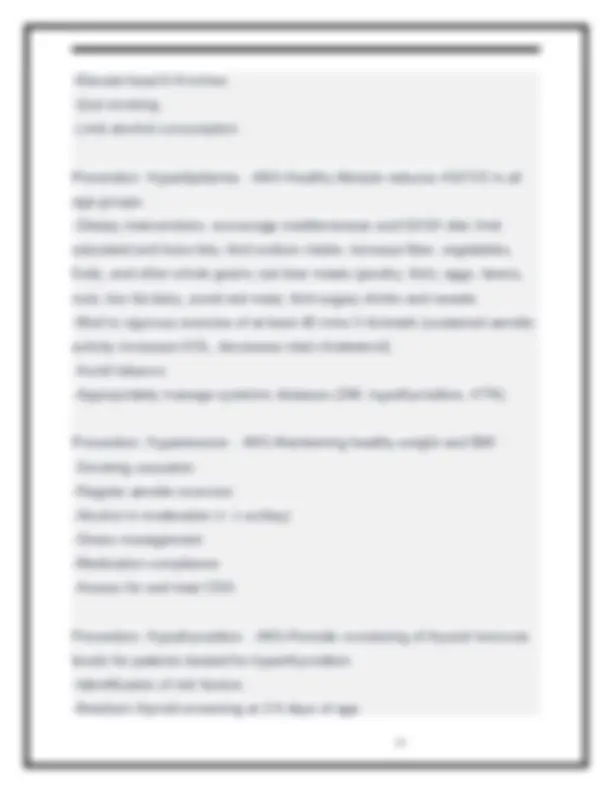
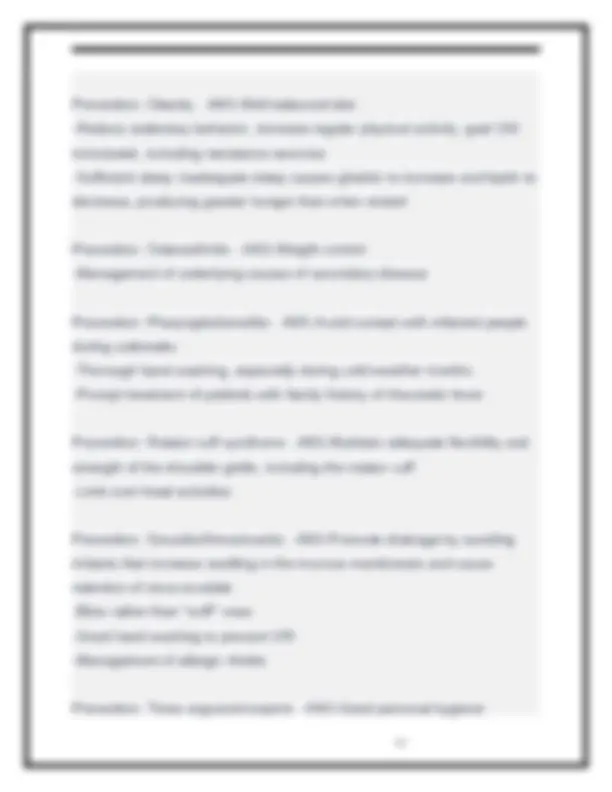
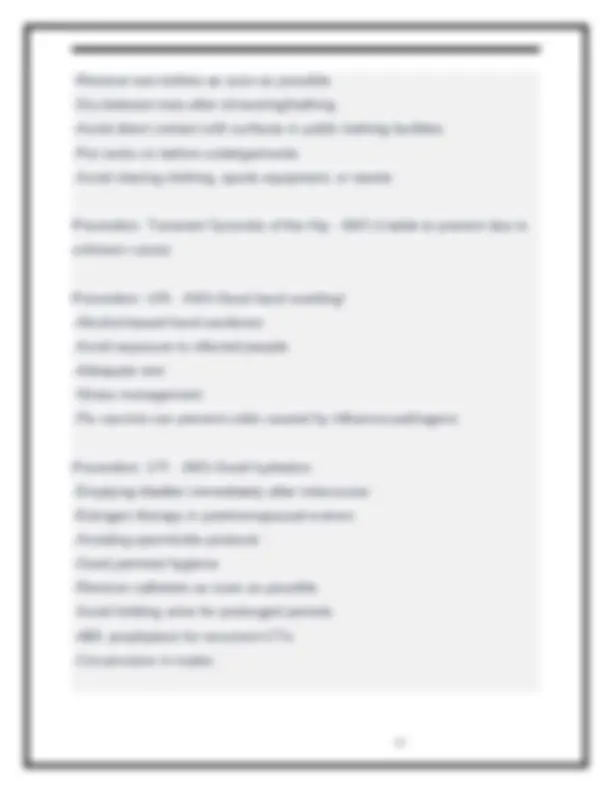
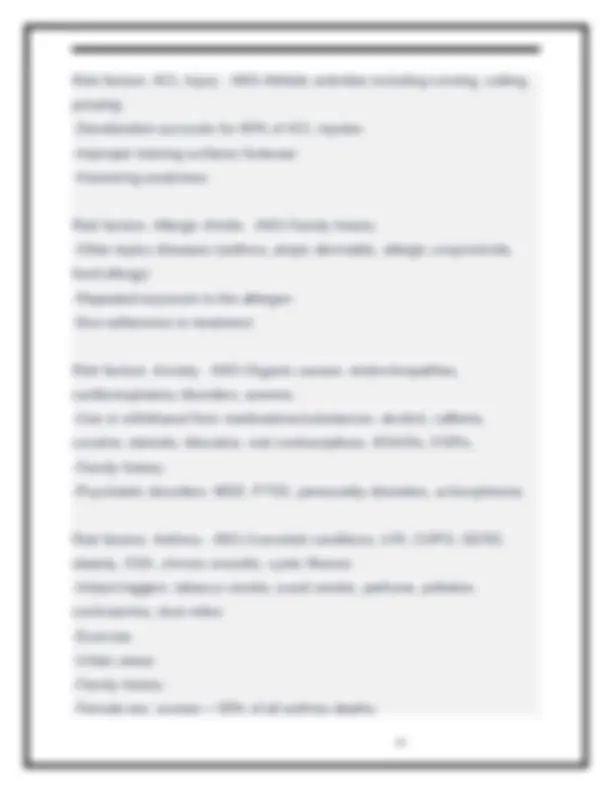
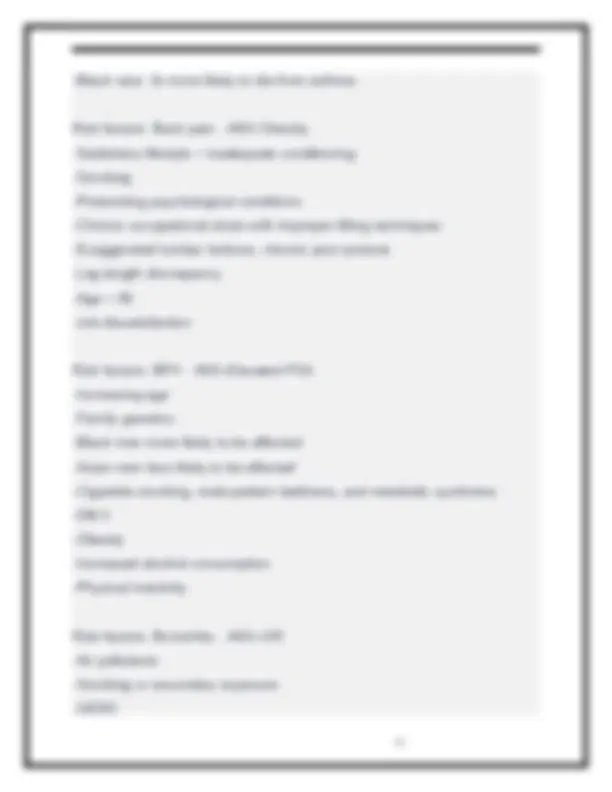
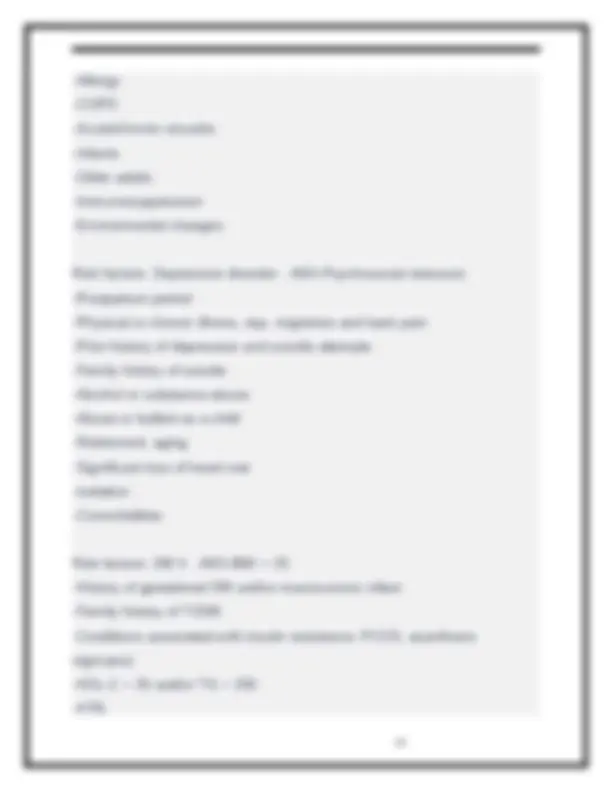
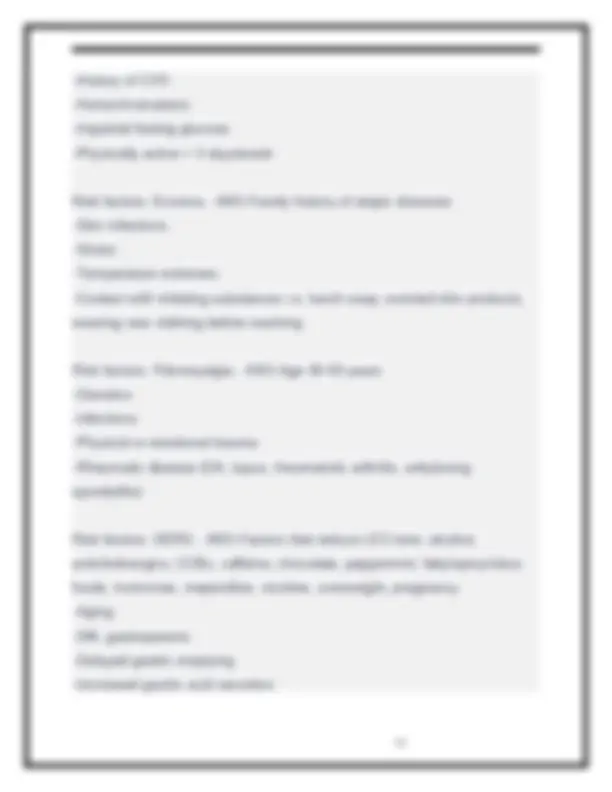
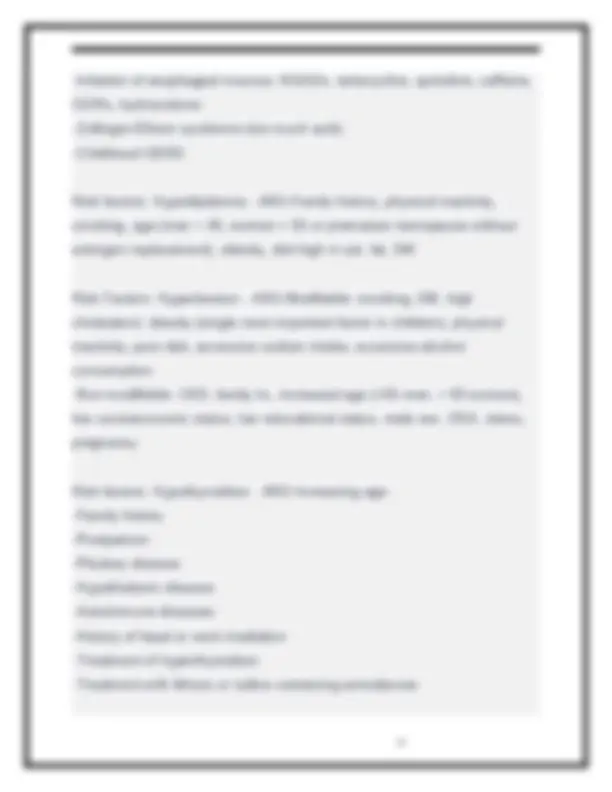
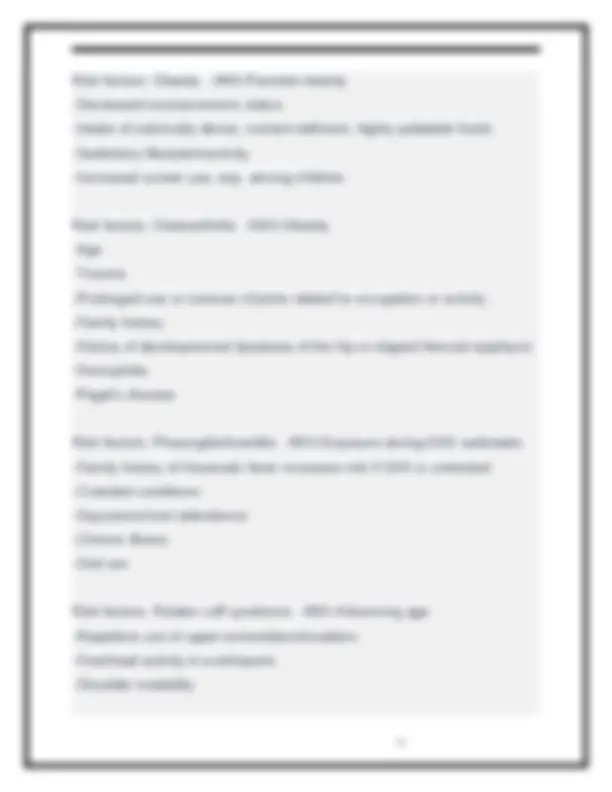
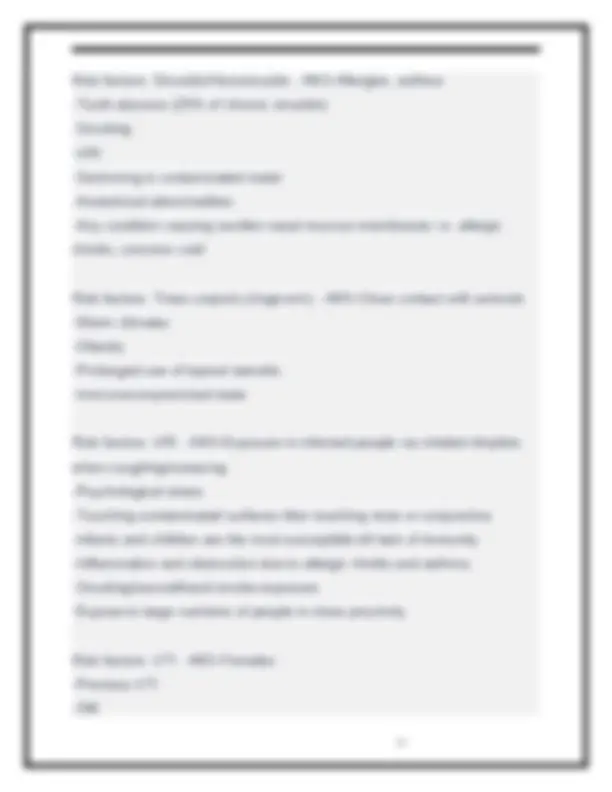
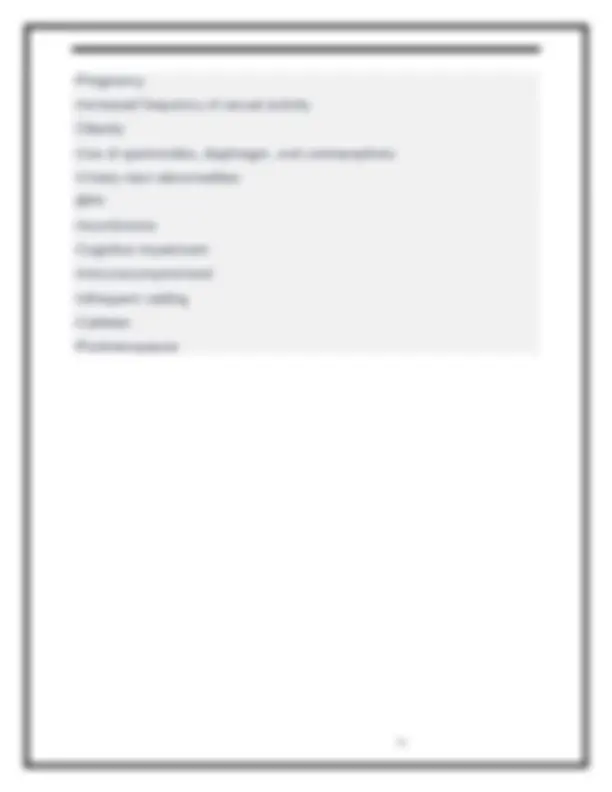


Study with the several resources on Docsity

Earn points by helping other students or get them with a premium plan


Prepare for your exams
Study with the several resources on Docsity

Earn points to download
Earn points by helping other students or get them with a premium plan
Community
Ask the community for help and clear up your study doubts
Discover the best universities in your country according to Docsity users
Free resources
Download our free guides on studying techniques, anxiety management strategies, and thesis advice from Docsity tutors
NR 667 VISE Assignment Newest Update 2025-2026. Questions & Correct Verified Answers. Graded A
Typology: Exams
1 / 73

This page cannot be seen from the preview
Don't miss anything!


































































-Assessment findings: Eczema – ANS -Pruritus, erythema, dry skin, erythema of infraorbital folds, antecubital fossa, posterior patella, scalp -Flexural surfaces i.e. doors of hands, feet -Often reappears in adulthood after absence since childhood -Lichenification and scaling typical -Diagnostic studies: Depressive disorder – ANS -Structured interviews/questionnaire -DSM- -PROMIS (ages 6-17) -PHQ- -Zung- self-rating depression scale -Laboratory studies to rule out other conditions: TSH, urine drug screen, ECG, Vit D, genetic testing to help with medication selection -Diagnostic studies: Eczema - ANS-Usually none needed -80% of patients have eosinophilia during exacerbations -Serum allergy testing -Differential diagnosis: Depressive disorder - ANS-Bipolar disorder -ADD
-Chronic physical illness -Physical/sexual abuse -PTSD -Substance abuse -Grief reaction -Hypothyroidism/B12 deficiency -Dementia -Expected course: Eczema - ANS-Exacerbations and remission -Expect flare-ups -Risk factors: Tinea unguium - ANS-Excessive exposure to water, soap, detergent -Distortion of nails from chronic inflammation -Commonly associated with tinea pedis -Risk factors: Transient Synovitis of the Hip - ANS-History of URI 7-14 days before symptom onset in 70% of affected children -History of trauma Assessment findings: ACL Injury - ANS-Timing -Mechanism -Popping sound at the time of injury -Acute pain -Inability to weight bear after injury -Acute swelling/hemarthrosis with rapid onset -Joint instability, "giving out"
Assessment findings: Asthma - ANS-Free of symptoms between attacks -Airway constriction causing expiratory wheezing -SOB -Tachypnea, tachycardia -Nonproductive cough -Chest tightness -Hyper-resonance -Prolonged expiration -Accessory muscle use in severe attack -Sudden nocturnal dyspnea -Decreased exercise tolerance Assessment findings: Back pain - ANS-Cauda equina is a surgical emergency that presents with back pain + 1. perineal anesthesia, 2. loss of bladder/bowel control, 3. loss of rectal sphincter tones with digital exam, 4. bilateral radicular pain, numbness and weakness -Back, but, and thighs may be aggravated by movement, rising from seated position, standing, and flexion; may be relieved by rest, repositioning, or reclining -Muscle spasm may be present over lumbosacral area due to ligament or muscle involvement -Pain may radiate down leg below knee with with spinal nerve irritation and radiculopathy -Motor, sensory, and reflex exams are essential; note asymmetry of findings -Observe gait, lower extremity strength, and muscle bulk
Assessment findings: BPH - ANS-Obstructive: incomplete bladder emptying, hesitancy and post-void dribbling, straining to void, weak urine stream -Irritative: nocturia, frequency, urgency, dysuria -Urinary incontinence -Urinary retention -Hematuria: gross or microscopic -Firm, smooth, symmetrically enlarged prostate Assessment findings: Bronchitis - ANS-Cough: dry and non-productive, then productive, may be purulent -URI symptoms -Fatigue -Fever due to bacterial infection; more common in smokers and those with COPD -Fever due to virus; unusual after the first few days -Burning sensation in chest -Crackles, wheezes -Chest wall pain Assessment findings: Depressive disorder - ANS-Depressed mood for 2 weeks or longer and/or anhedonia (inability to feel pleasure) -Increased/decreased appetite -Weight loss or gain -Sleep disorder -Psychomotor agitation or retardation
-Dysphagia -Erosion of tooth enamel -Esophageal pain referred to neck, midback, upper abdomen -Extra-esophageal presentation: asthma, chronic cough, laryngitis -Post-nasal drip, throat clearing -Pyrosis (heartburn) -Regurgitation -Sensation of lump in throat -Ulceration: hematemesis, fatigue, anemia Assessment findings: Hyperlipidemia - ANS-Few physical findings; xanthomata (fat deposits in the skin), xanthelasma (yellow plaques on the eyelid), corneal arcus prior to age 50 (arc of cholesterol around the iris), bruits, angina pectoris, MI, stroke Assessment findings: Hypothyroidism - ANS-Clinical symptoms range from asymptomatic to myxedema coma -Lethargy, delayed DTRs -Mild weight gain, swelling of hands/feet, macroglossia (large tongue), periorbital edema -Cold intolerance -Constipation -Menstrual irregularities, decreased libido, infertility -Memory loss, depression -Course dry skin; body and scalp hair loss, brittle nails -Bradycardia, enlarged heart -Anemia
*Expect lipid levels to be elevated Assessment findings: Obesity - ANS-Staging is based on complication- specific criteria -Waist circumference: Women > 35 inches; men > 40 inches Assessment findings: Osteoarthritis - ANS-Joint pain, usually asymmetrical, develops insidiously and accompanies or follow physical activity -Morning stiffness lasting < 1 hour; stiffness resumes toward the end of the day after periods of activity -Joints are cool with possible crepitus and limited ROM -Overgrowth of osteophytes results in bony enlargement, especially bunions (MTP joint), Heberden's nodes (DIP), and Bouchard's nodes (PIP) -Joint instability, particularly the knees Assessment findings: Pharyngitis/tonsilitis - ANS-Sore throat, pharyngeal edema -Tonsillar exudate and/or enlarged tonsils -Malaise -Suggestive of strep: cervical adenopathy, fever > 102, absence of other upper resp. findings, petechiae on soft palate, "beefy" red tonsils, "sandpaper" rash, abd. pain, headache, distinct odor Suggestive of viral infection: concurrent conjunctivitis, nasal congestion, hoarseness, cough, diarrhea, viral rash Assessment findings: Rotator cuff syndrome - ANS-Pain, often at night; may be referred to deltoid; may increase with overhead movement
-May occur in groups of 3 or more Assessment findings: Tinea unguium - ANS-Nails are lusterless, brittle, hypertrophic, friable -May see white patches -Up to 80% of cases occur on toes with first digit most commonly involved Assessment findings: Transient Synovitis of the Hip - ANS-Acute onset of groin, anterior thigh, or knee pain -Child remains ambulatory but walks with a limp to avoid pain (antalgic gait) -May have low-grade temp -Does not hold hip flexed or abducted; abduction and internal rotation are restricted -Hip may be tender to palpation -Most sensitive test is log roll: roll affected hip from side to side-may see guarding or decreased ROM -May have decreased ROM in knee on affected side -Usually unilateral, but may affect both hips Assessment findings: URI - ANS-Obtain thorough history to aid dx -Most common symptoms: nasal stuffiness, sneezing, scratchy/irritated throat, hoarseness, runny nose, red/irritated nasal mucosa -Nasal secretions: initially clear, progress to cloudy, yellow, or green -Malaise, headache -Halitosis -Cough -Occasional low-grade fever
Assessment findings: UTI - ANS-Burning, frequency, urgency -Pain during/after urination -Sensation of incomplete bladder emptying -Fever, chills -Hematuria; gross or microscopic -Lower abdominal and/or back pain -CVA tenderness -Dribbling of urine in men -Small volume/frequent voiding -Foul-smelling urine *Most common symptom in children is fever Assessment: Hypertension - ANS-Most are asymptomatic; occipital headache, headache upon waking, blurry vision, fundoscopic exam (AV nicking, exudates, papilledema), left vent. hypertrophy, pregnancy w/HTN and proteinuria, edema, and excessive weight gain Diagnostic studies: Pharyngitis/tonsilitis - ANS-Rapid antigen strep test -Throat swab for culture -In children, culture throat swab to confirm strep results; not necessary in adults as acute rheumatic fever is less likely -Strep is uncommon in children < 3 *10% of patient with mono have concomitant strep Diagnostic studies: Tinea unguium/corporis - ANS-KOH scraping -Wood's lamp exam
-Cognitive disorder (i.e. delirium) -Substance intoxication or withdrawal -PTSD -Any medical condition that involves stimulation of the sympathetic nervous system Differential diagnosis: Asthma - ANS-URI, sinusitis, vocal cord dysfunction -Heart failure -GERD -Habitual cough -COPD -Cystic fibrosis -Medications (ACEIs) -TB -Tumors -PE -Foreign body aspiration, esp. in children Differential Diagnosis: Back pain - ANS*New onset radicular pain in older patients is often a sign of spinal stenosis -Low back strain -Herniated disc -Multiple myeloma -Osteomyelitis -Prostatitis, pyelonephritis -Vascular occlusion at level of bifurcation; AAA
-Carcinoma if bony metastasis occurs -Endometriosis, fibromyalgia -Depression, hysteria -Malingering (get out of work card) -Compression fracture, osteoporosis -Osteoarthritis -Ankylosing spondylitis -Cauda equina -Hip/pelvic pathology -Drug-seeking Differential diagnosis: BPH - ANS-Prostatitis -Prostate cancer -Urethral stricture -Neurogenic bladder -Side effect of meds (sympathomimetic, opiates, antihistamines, anticholinergics) -UTI -Malignancy (bladder or prostate) Differential diagnosis: Bronchitis - ANS-Common cold -Acute rhinosinusitis -Pneumonia -Influenza -Rhinosinusitis -Bronchiectasis -Chronic cough
Differential diagnosis: GERD - ANS-Asthma -Cardiac disease -Cholelithiasis -Esophageal spasm, infection, cancer -H. pylori -Hiatal hernia -IBS -Intestinal motility disorders -Lower resp. infection: bronchitis, pneumonia -PUD (often coexists) Differential diagnosis: Hyperlipidemia - ANS-Secondary causes: hypothyroidism, pregnancy, DM, non-fasting state Differential Diagnosis: Hypertension - ANS-Secondary HTN, white coat HTN (artificial elevation d/t medical environment anxiety) Differential diagnosis: Hypothyroidism - ANS-Depression -Dementia -Heart failure -Kidney failure Differential diagnosis: Obesity - ANS-Acromegaly -Ascites -Iatrogenic Cushing syndrome -Mesomorphic body states: elevated BMI due to muscle mass rather than adiposity
Differential diagnosis: Osteoarthritis - ANS-Gout, pseudogout -Infective arthritis -Inflammatory arthritis -Joint injury -Soft tissue injury -PVD -Giant cell arteritis -Bursitis -Tendinitis -Osteopenia -Neuropathy -Hemochromatosis Differential Diagnosis: Pharyngitis/tonsilitis - ANS-URI -Tonsilitis -Mono -Peritonsilar abscess -Epiglottitis Differential diagnosis: Rotator cuff syndrome - ANS-Shoulder instability, frozen shoulder -AC joint injury -Degenerative glenohumeral arthritis -Cervical radiculopathy -Cervical strain -Avascular necrosis
-Slipped capital femoral epiphysis -Femoral neck stress fracture -Lyme arthritis -Juvenile idiopathic arthritis Differential diagnosis: URI - ANS-Allergic or vasomotor rhinitis -Pharyngitis (viral vs bacterial) -Acute bronchitis -Influenza -Sinusitis -Pertussis -Mono -Epiglottitis -Mumps -Rubeola -Varicella Differential diagnosis: UTI - ANS-Vaginitis -STD -Hematuria from another cause -Pregnancy -PID -Prostatitis, epididymitis -Enuresis -Overactive bladder -Interstitial cystitis
Etiology: ACL Injury - ANS-Usually injured during non-contact maneuvers which the foot is planted firmly on the ground and the knee and leg are twisted while the body is stationary -Often a low-velocity injury -Often involves hyperextension with internal rotation of the tibia, or external rotation of the tibia with the knee flexed and valgus force to the knee -Often accompanies meniscus or associated collateral/PCL ligament injury Etiology: Allergic rhinitis - ANS-Any substance or condition that causes an IgE-mediated response characterized by rupture of mast cells and release of histamines, leukotrienes, prostaglandins, and other compounds -Seasonal allergens: pollens from grass, trees, weeds -Perennial allergens: mold, animal dander, dust mites, smoke Etiology: Anxiety - ANS-Behavioral theory: a conditioned response to specific environmental stimuli -Genetic component: 1st degree relatives increases the likelihood 8-fold -Biologic theories: Norepi, serotonin, and GABA are poorly regulated; the ANS inappropriately responds to stimuli; cerebral pathology causes anxiety; HPA axis highly implicated Etiology: Asthma - ANS-Inflammation of the bronchial mucosa and spasm of the bronchial smooth muscle lead to narrowing of the small and large airways -Produces characteristic cough and wheezing Etiology: Back pain - ANS-Often unclear